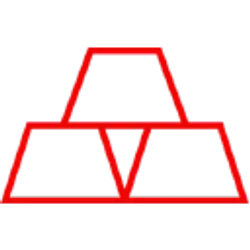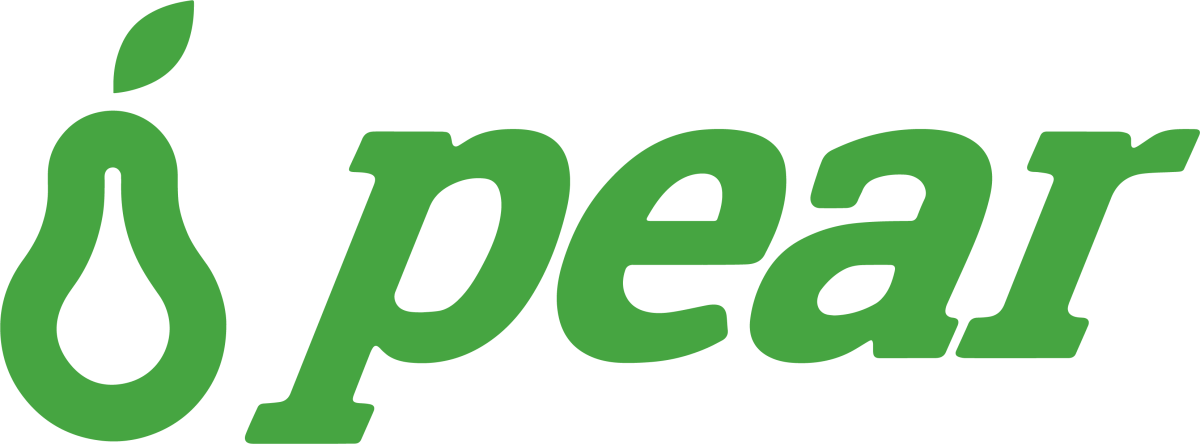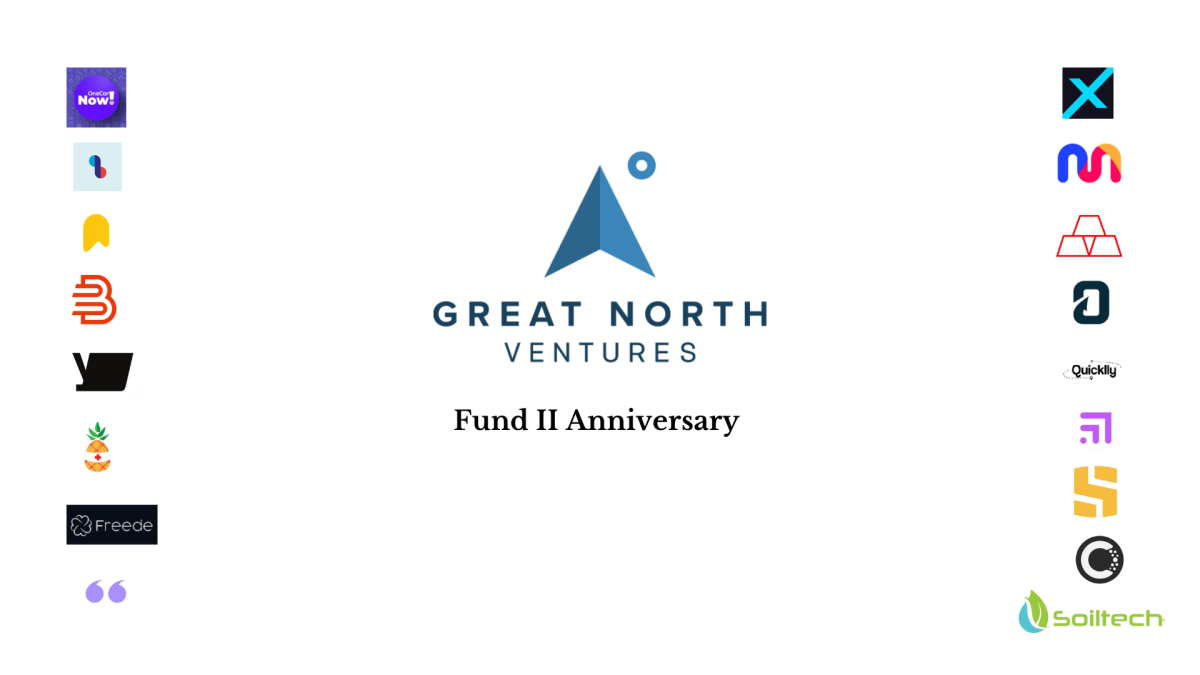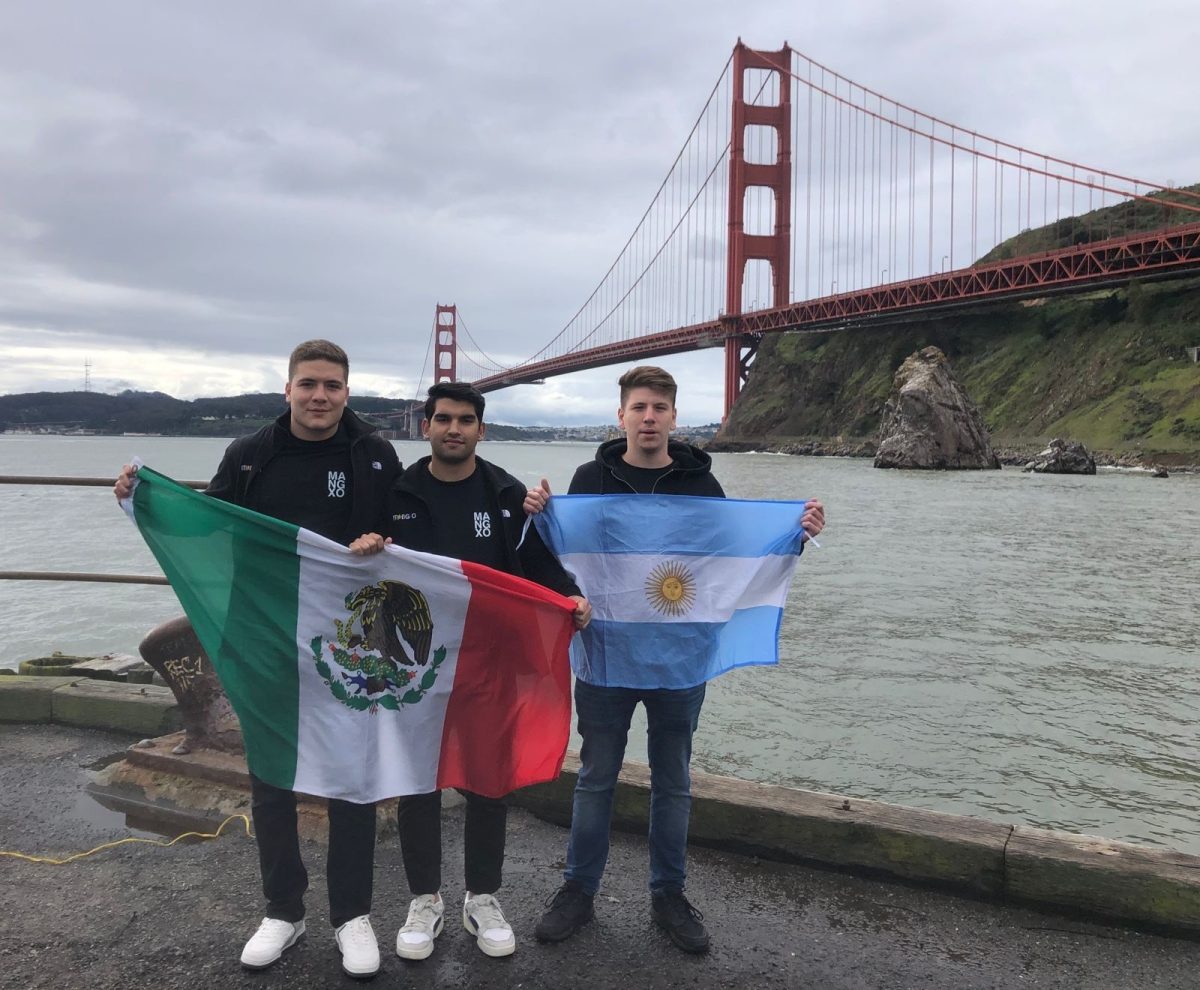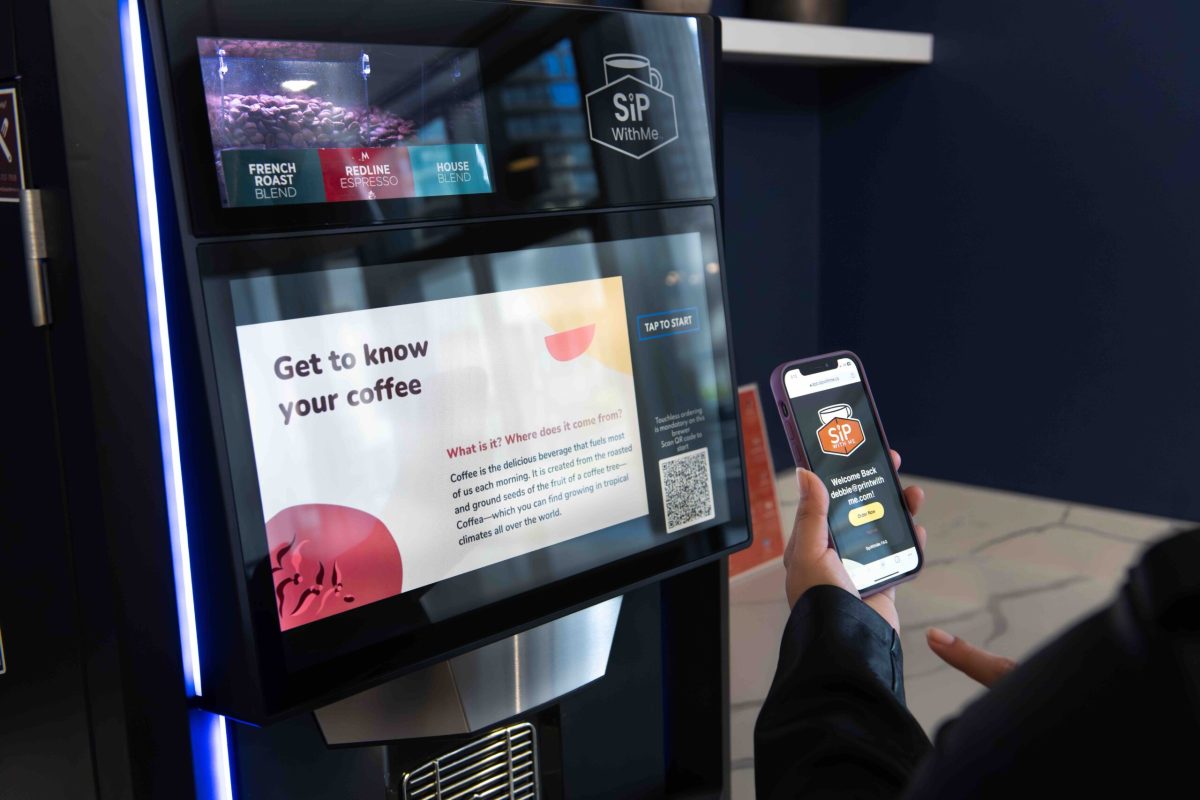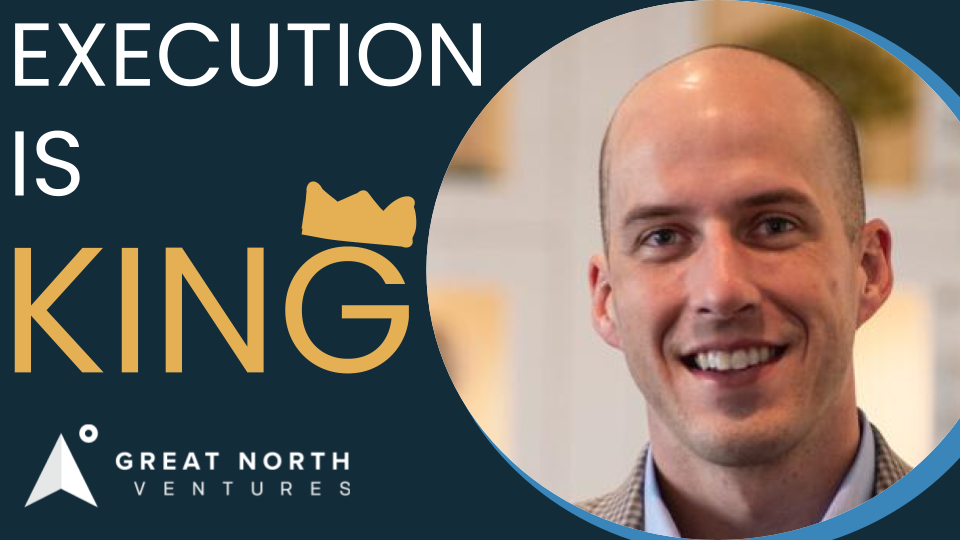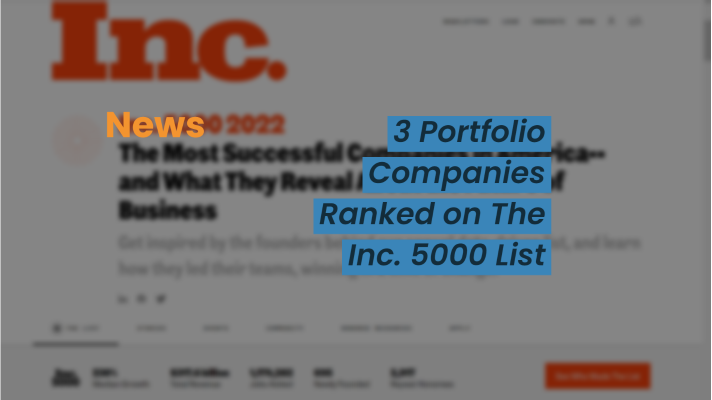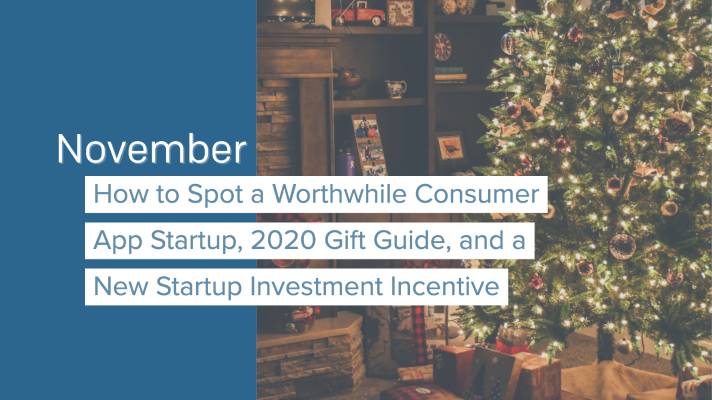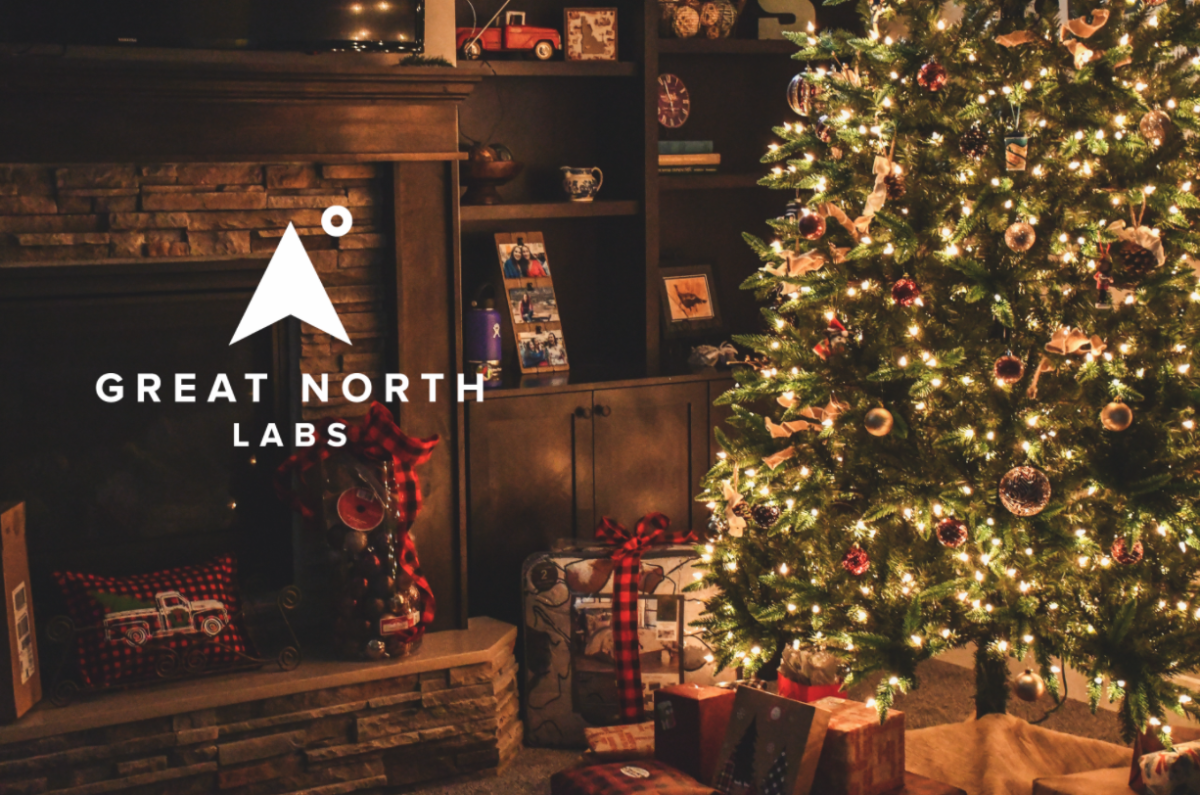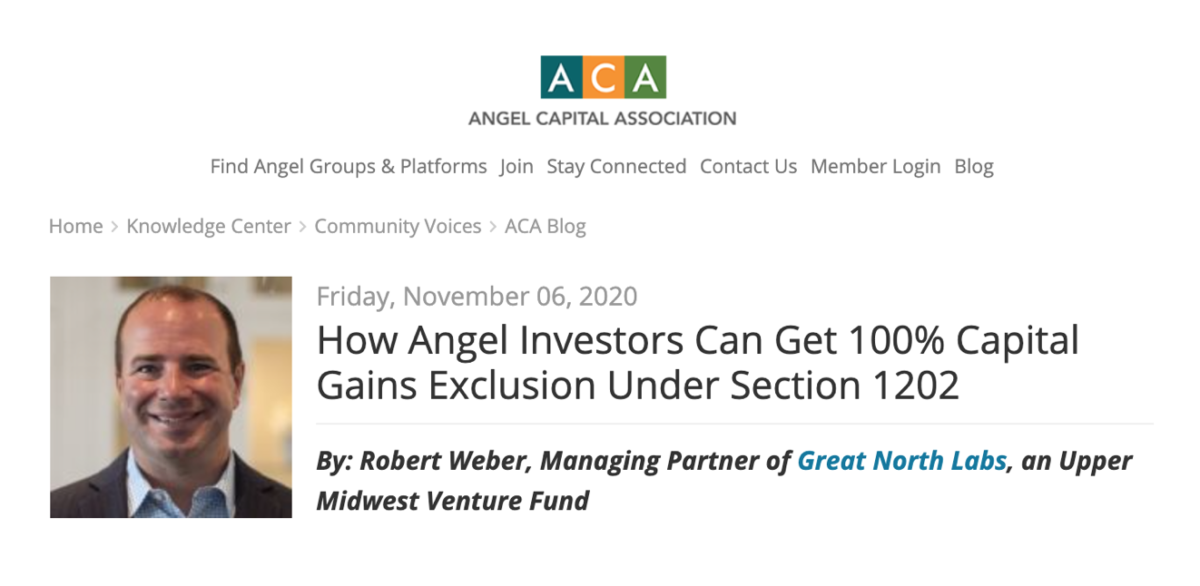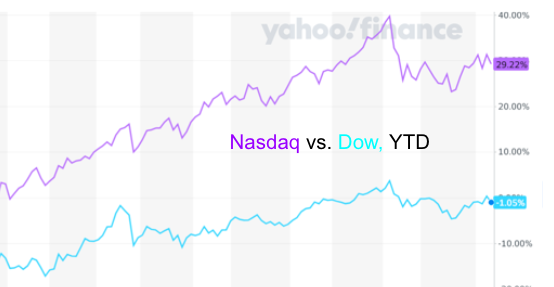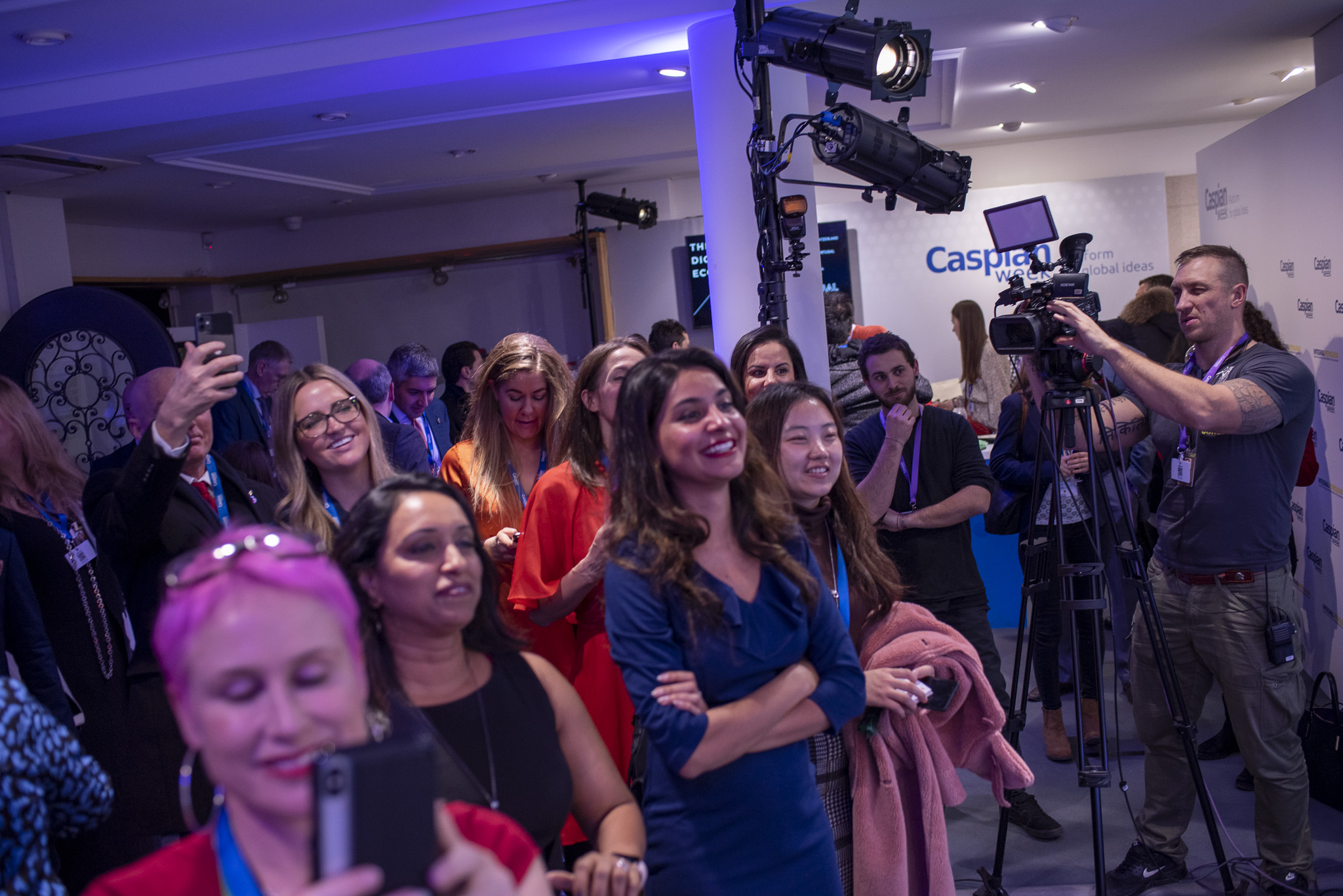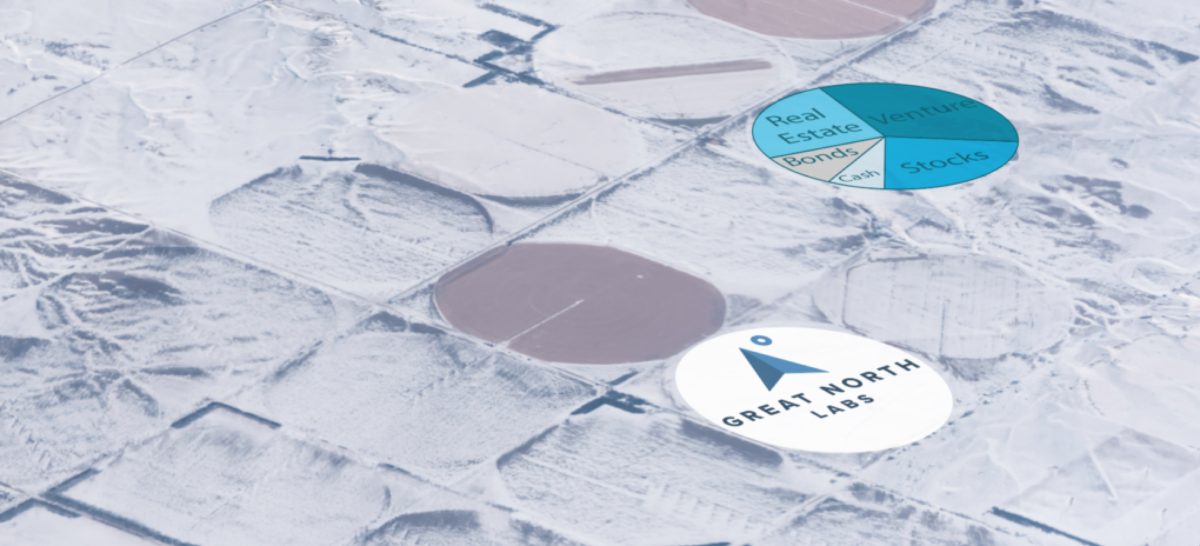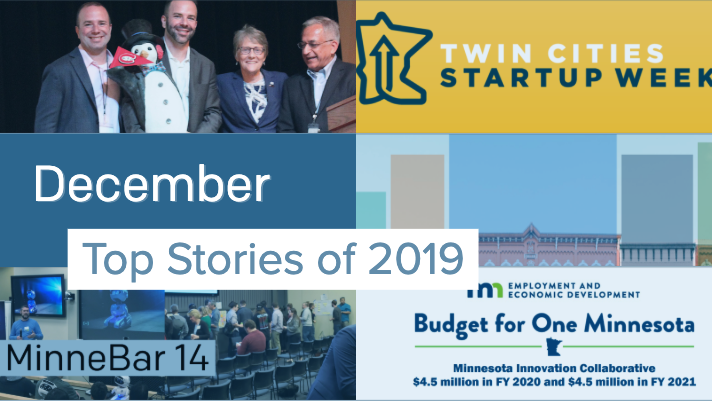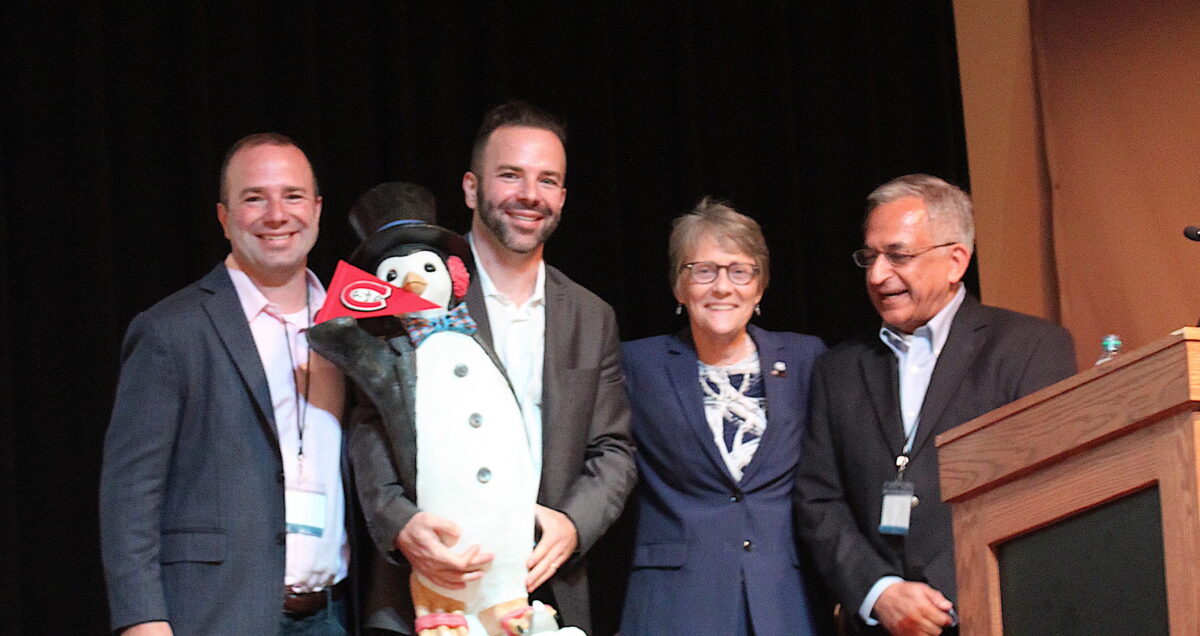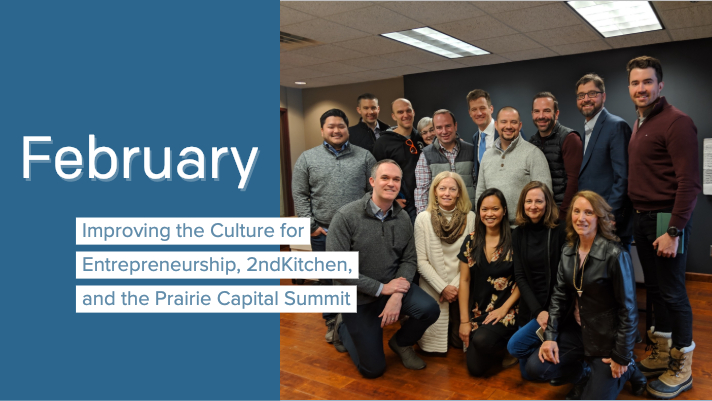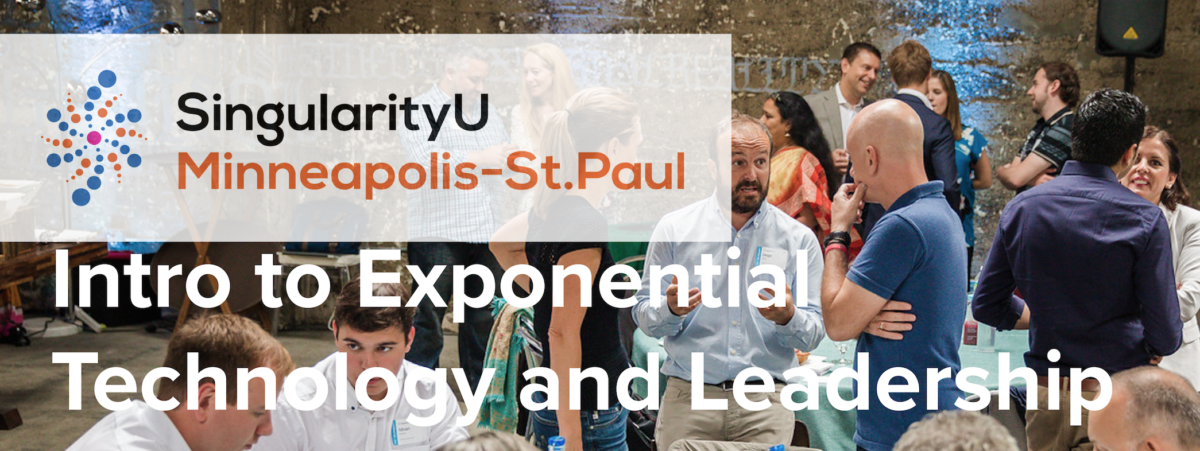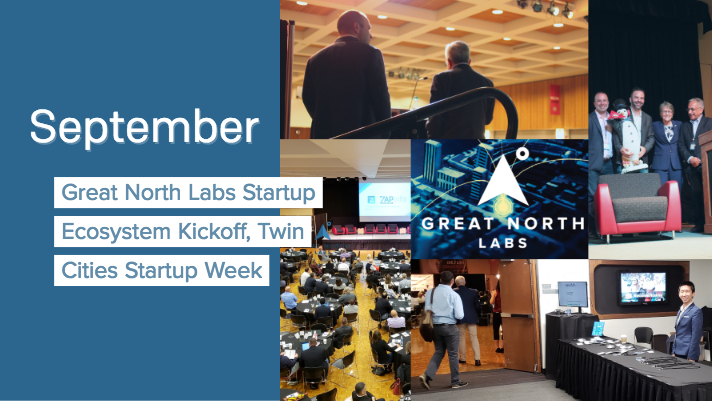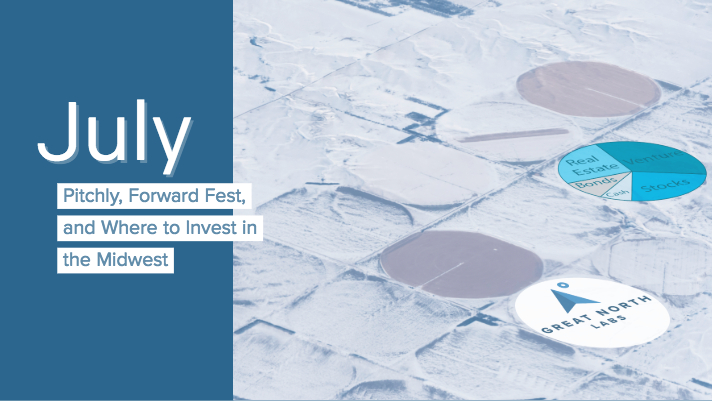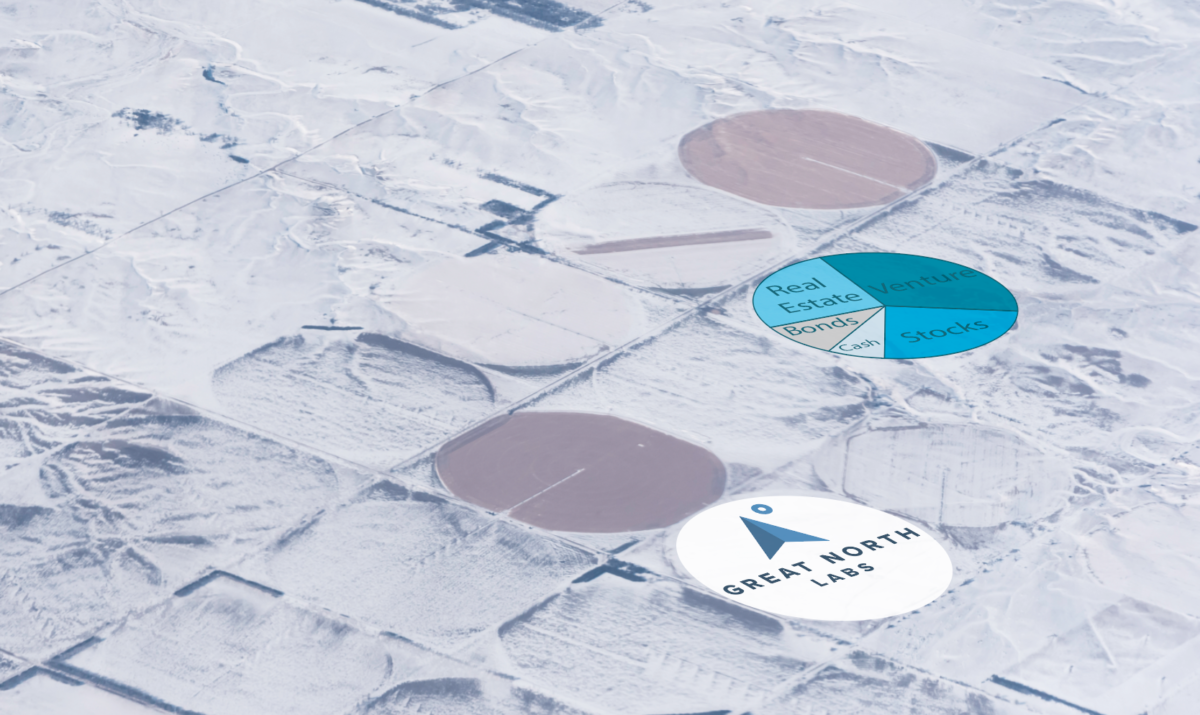Great North Ventures Investment Themes
Great North Ventures is a network-driven, generalist early-stage fund that prioritizes exceptional execution. Founded by founders, for founders – we back repeat founders, we back strong first-time founders, and we form founder teams in our venture studio.
Our innovator network and team’s connections drive our value-add to startups, and our network density is greatest in Minnesota and the Upper Midwest. While we are a generalist fund, we invest in three themes: “Solving Labor Problems”, “Digital transformation Through AI”, and “Community-Driven Applications”.
Community-Driven Applications
There is a global trend towards network-driven software expanding into every industry, for both consumers, and for businesses. And while much of the world is buzzing about Web3, we believe we are still in the early innings of Web 2.0, as these software platforms continue their expansion.
There is a strong investment reason to invest in network-driven startups: they outperform! Why? Network-driven apps have lower customer acquisition costs than their single-user counterparts. This is because of strong viral effects that make use of growth loops, which compound user acquisition. When these network effects cause customers to engage with other customers retention rates also increase.
Founders building software today can leverage the behavioral design patterns that dominated horizontal online communications (Facebook, Instagram, Snap, YouTube) and gaming (Roblox, Fortnite, Zynga, etc). These same Web 2.0 patterns can be applied in any category where end users benefit through collaboration.
Web3 startups will also take advantage of these network effects. The winners in the crypto and metaverse spaces will take on a mobile-first approach (“Start With a Mobile App, Not a Website”) and will adopt best-in-category community features. Regardless of which internet paradigm a startup is part of, the apps with the highest engagement of their end-users will win in most categories and capture most of that category’s profits.
Starting and scaling a network can be challenging due to what is commonly referred to as the cold start problem. In addition to having a strong product, successful startups usually find the smallest network that can stand on their own (“atomic network”) and focus on building a leadership position there before expanding to other networks while eventually eroding the market share of the incumbent network.
In practice, we have seen other strategies work as well. Andrew Chen details four of them in his book “The Cold Start Problem”:
1. Invite Only refers to allowing users to join only if they are invited to use the app by other users. This ensures a stronger network effect from those that get invited as they already know other users on the service.
2. Come for the Tool, Stay for the Network refers to providing a single-player mode that allows a user to get value from the service even before it has a strong network. Instagram had photo filters, for example.
3. Paying for Launch refers to paying to grow the network, after the initial atomic network has been figured out, as a way to accelerate growth until the tipping point is reached where the network grows rapidly due to compounding atomic networks strengthening each other. This tends to be expensive and is not usually a tactic taken in the early stages of a startup that is resource-constrained.
4. Flintstoning refers to manually helping to keep the network strong while still early in developing automated capabilities that can exist at scale through the stronger network and product.
Tactically, we see many of the same tools and techniques work effectively across social apps. We’ve had startups scale based on strong network effects in both consumer and enterprise businesses. Usually, incumbents lack the creativity and know-how to thwart a well executed attack. Utilize a new technology, or market trend, to uncover a unique and valuable tool or focus on a specific network whose needs are only partially being satisfied and you may have the next big community app.
What We are Looking For
Vertical Social and Passion Marketplaces
The Web 1.0 marketplace winners like Craigslist and eBay were largely horizontal in nature. Since the early 2000s, nearly every category of e-commerce has had multiple successful marketplaces targeting it. But most categories have not fully embraced Web 2.0.
We have multiple examples of these marketplaces in our portfolio, including NextGem, Mustard, Omnia Fishing, and TeamGenius.
Consumerization of Enterprise SAAS
Enterprises used to move slowly when it came to new tech adoption. Workers have accelerated and transformed that adoption as tools they elect to use garner enterprise sales. By getting enough workers to adopt the product first, businesses can’t say no to the enterprise products without risking productivity. As a result, now enterprise software is consumer grade: simple, easy to use, and mobile first.
Examples from our portfolio include Branch, FactoryFix, Dispatch, Flywheel, Mustard, Omnia Fishing, PartySlate, Pitchly, SkillIt, CoverLease, ClinicianNexus, and Structural.
Work with us
If you have a startup that is a community-driven application, submit here for feedback. We will provide pitch deck feedback to all startups who submit. Before you submit, get an inside look at our process first: “This is how to evaluate early-stage consumer app startups”
In this episode, Rob and Josef talk about a new book out about network effects, “The Cold Start Problem” by Andrew Chen.
They speak with Una Fox, who works as a Chief Global Data & Analytics Officer. Una was previously a VP at Disney and a Director at Yahoo, and is a truly data-driven leader. Una has known Rob for over a decade, and talks about personal network effects and startup communities, and gives advice to founders for getting value from their organization’s data.
Who does Una see executing? Tripp.
Transcript:
Josef Siebert 0:09
Welcome to the execution is King podcast where we talk to successful startup founders, investors and ecosystem builders to uncover insights and best practices for the next generation of great global startups. Today, I’m talking to rob Weber, managing partner at Great North ventures. How’re you doing today? Rob?
Rob Weber 0:29
I am doing great. How are you doing? Joseph?
Josef Siebert 0:31
Good, good. I’ve been reading this new book, actually, by Andrew Chen. He runs this program called the reforge program. He’s also a venture capitalist. I applied to that program a couple times already. But I’ve been rejected, because I work for a VC and they strictly accept startups to work on all of these, like network based digital tactics, basically for growth. But it’s really great book. I know you’ve read it as well.
Rob Weber 1:00
Yeah, I think the the cold start problem, you know, I came from the consumer app, kind of social app space. And so I worked, you know, a lot with social apps and marketplaces. And of course, Andrew Chen, who wrote the book was that it’s kind of famously in the growth team at Uber, to their rapid growth, before going over to Andreessen Horowitz. And, you know, for what it did for me was, it’s a, there’s about an eight year period where we were operating these business native acts, which put us kind of in collision with all these leading consumer social apps and marketplaces and games around the world. You know, I found that book to be really clarifying in terms of a lot of the things I remember reading about learning from talking to people at conferences about, you know, how you how you, like, spin up these growth teams, how do you create this kind of growth mindset, there really is sort of a playbook for how you create these sort of multiuser kind of network driven applications. And some of the examples how people fake it are really interesting, like Tinder with college party to college party, just signing up people are, these are like, my favorite stories, because, you know, once they get big, and they scale up, and they they figured a repeatable way to do that. Okay, you know, I think people just sort of think of them for what they become, almost every one of these types of businesses have this sort of, they didn’t start out with a big network effect or a big audience. So how do they break through, you know, and become one of these gigantic successes,
Josef Siebert 2:23
they had to do things that didn’t scale? Right? To get over that the cold start problem?
Rob Weber 2:28
Yeah. And I think sometimes I really liked in there to sort of kind of reminded me, like, you know, is it just like a big launch? And you get a bunch of publicity? No, no, not really. Usually, that doesn’t work that well, like normally, it’s about this, like atomic unit, how do you create value within maybe even just two people to start with the examples of big successes generally, that’s kind of how they start. But this talks a lot about like, you know, kind of the startup world, you know, and the network kind of driven business models. But I think, in this episode, una Fox, you know, we’re going to talk a lot about kind of the network effects of just working with people and community, and how your own career can kind of take advantage of network effects. And it’s kind of a full circle moment. For me, I think I met Oona 15 years ago or so? Well, she was an executive at Yahoo, which was our largest customer at the time at my prior startup. And we did you know, millions and millions of dollars of business with the Windows team over maybe a span of, I don’t know, as five years, maybe 10 years in there. And I that put me in really close contact with Oona her leadership style and the team. And so I kind of lost touch with her. I know, she eventually left Yahoo. And Yahoo was a lot different company, you know, 15 years ago than it is today. Or certainly 25 years ago, like in the 90s, like Yahoo, people, you know, the Gen Z years probably don’t recall, like, don’t remember, they would have been around. Yahoo was like a Juggernaut and the internet in the 90s and early 2000s, you know, people before Google even came onto the scene, right? Like in the 90s. So you think about like, I kind of lost touch with Luna, she went on to Disney, where she worked on, I think, initially, she was on the E commerce team that launched marketplaces for the Disney Stores. And then I think she also worked on the Disney plus launch, which was obviously one of the most successful consumer subscription business launches of all time. And so I remember reaching out to her just to check in like six months ago, and we just started to hit it off. And I think is the trust we had built over the years. You know, while working together at Yahoo. You know, it was it was almost like not missing a beat. And I found that, you know, throughout your career, whether it’s who you partner with, with your business, who you choose to work with, and recruit to your company, like I think, I think that’s one of the opportune one of the opportunities I love about no working in businesses, you kind of get to pick and choose who you work with. And once you’ve built up that trust in, you can kind of it can be repeated in how you build teams, how you lead teams, who you work with? So there’s a lot of there’s a lot of this sort of network effects in business beyond just, you know, scaling social apps.
Josef Siebert 5:08
When a fox is the chief global data and analytics officer at Aristocrat, welcome to the podcast Duna.
Una Fox 5:15
Hey, Joseph, it’s great to be here. Thanks for having me.
Rob Weber 5:19
So soon, I know you’ve been a part of launching some really impressive digital businesses, and initiatives at some larger companies like Yahoo, and Disney, can you kind of walk us through some of the leadership lessons that you’ve learned throughout your time kind of scaling these kinds of digital businesses,
Una Fox 5:35
I’ve been doing this now for over for almost 20 years. So there’s lots of different use cases and different experiences that I’ve been through. So when I was at Yahoo, it was really all about the Ad Tech experience and building out new digital products. And I was having a conversation with somebody and at a Silicon Valley conference a few years ago, and talking about ideas. And really, what I have seen over the course of 15 to 20 years working with different companies is that sometimes there is a product that you’re working on, that you have aspirations for that product, but maybe the timings just not right. You know, either it’s a b2b product or a b2c product. But even though you’re making progress on building that product, the timing might not be right for the market. And then at some point, years later, you see that product evolve, or it appears and the timing is right, and you think, Oh, my goodness, this is this is what we were waiting for. So when I was working at Yahoo, back in Oh, six, and oh seven, we started to build out a display network like we had for search. And at the time, we were trying to cobble together all of the systems that would allow us to do that, right. So basically, what we were doing was building partnerships with publishers to extend inventory, add inventory, and impression inventory, for Yahoo, and also for those publishers, so that we could reach consumers, either if they were on Yahoo, or at the publisher site, or somewhere else, I think it was a great idea was a great concept. And we were working really hard to make it happen. And then I think a lot of those people, technology people left and they ended up starting the DMP framework in products less than 10 years later. And then they showed up as DMPS. And when I was a Disney, I ended up being a client and onboarding Blu Kai, which is one of the biggest DMPS that was out there at the time. And I really understood the technology very quickly, because I had worked as an executive in the team at Yahoo. So I don’t know if that’s something that resonates with you.
Rob Weber 7:51
I mean, I think about timing, and you have these examples of like, you know, in the late 90s, as a teenager watching things like web van explode in the.com box, and then many years later, you know, seeing what happens when you have a mobile device with a capacity of an iPhone web ban wasn’t a bad idea. You know, maybe the timing was bad. To your point. I think we talked about this in the prior episode, Joe Stryver, a friend of ours, who’s the first UX hire at Google. And he talked about going through these compute paradigm shifts from like, the web to mobile. And now we’re headed everyone’s buzzing about Metaverse, and AR VR for all wearing 3d glasses in two or three years. How might that change some of the ideas from 10 or 20 years ago? Because there’s probably going to be some new things that maybe the the timing wasn’t right before. But with some new compute paradigm, maybe the timing will be better,
Una Fox 8:41
even 10 years ago, right? So 10 years ago, it was all about QR codes. So everyone was talking about QR codes needed to have a QR code. And then it got to a point where when you see it has a business that had a QR code, you’re like, what is the point of the QR code? Well, COVID COVID, changed all of that, right? The use of the QR code and the digital device, and how ubiquitous that has come and the restaurant and bar industry or any other services that are using QR codes, they become essential. It’s just what is old is new always. And I think you’re right about the glasses, actually. And I think that we’re going to see an explosion now and in the use of headsets, but it may not be in the way that we think it is it’s going to evolve VR is going to really evolve very quickly. Now there’s, I have a very good friend too. She’s done serial startups in the gaming space. And she has a company called trip, which the product is really using VR experiences for depression for mental health. And it’s been extremely successful. They’ve been working on this for a few years, but they’ve now really, you know, hit their stride. Yeah, that’s another example. Right? It’s just going to evolve very quickly. And look what happened with streaming and due to COVID as well, right? Everybody’s at home, no one could go to the movie theater. And so then suddenly it accelerated movies being released straight to streaming.
Josef Siebert 10:08
Yeah, it was interesting, not just how the technologies come back around, you know, as the circumstances change, but also how the people in the companies like, like these new initiatives that came on to what you were working on how that circled back when you move to Disney, and then suddenly you’re a client of, of these people you’ve been working with before?
Una Fox 10:26
Yeah, it’s another aspect of the network effect, right? You need a network effect around a product to make it successful. But then you also need a network effect and in your community to build relationships to business, hire talent, right?
Josef Siebert 10:41
Yeah, you need a network effect around your product and your business and your and yourself. Yeah, absolutely.
Rob Weber 10:47
That really resonates with me, I come to really appreciate being able to work with people that I built a trusting relationship with. Also just seeing people who can execute when you work in like in the world, there’s a lot of people who make promises and under deliver, and they don’t really hold up to their commitments. And so I think reputation really is earned. And I think that’s why I think the network effects of kind of building a career around relationships, at least certainly resonates a lot with me.
Una Fox 11:15
Everybody enjoys working on a mission together and getting things done. And I think if you are able to work in a team, you’ve got a harmonious bond together, you’re getting products out the door, you’re getting things done, you have a mutual feeling of success together, then when you when you leave that experience, you go work in other places, my experience is that I have maintained those bonds and those relationships with people through the course of my career. And they still call me we call each other, we refer each other, we advise each other. I don’t know how I could exist in my career without that, right. I mean, the fact that you and I and Ryan work together, you know, over 15 years ago now, and we’re still connected and can call each other and, you know, I think it’s a pretty good easy conversation, right? We have, we have a trusted relationship. So it’s absolutely critical. It’s all about having good positive relationships with people.
Rob Weber 12:14
I think we talked about that. I can’t remember which episode but someone was talking about, like recruiting maybe that was also the Joe Stryver episode, who was at Google and how one of the things he observed in the Bay Area was how you had these like clusters of people in like product and engineering teams, kind of going from company to company, but together, because, you know, the company was kind of less important to them than just the who they worked with. And I think that was kind of an interesting thing, when you’re if you’re scaling a business really fast, you know, if you get a certain group of people, they’ll probably helped bring other talented people.
Una Fox 12:45
Absolutely. Yeah, for sure. Are you both familiar with the Maya Angelou quote, which is, maybe nobody will remember exactly what you say, but they will remember how you made them feel? You know, there’s such a huge conversation now. Everybody took time and took stock of their lives during the pandemic and during COVID to evaluate what they want to do. And people absolutely do not want to be working in toxic work environments, right? So it is it’s very important to have, first of all, for yourself a good understanding of what you want, as an employee, and what kind of relationships you want to have with people around you. And then as a manager and a leader, you really have to have an empathetic perspective, when it comes to working with people understanding every individual situation, people are not going to want to work in toxic workplaces. So I just think it’s really important for managers to think about how they make people feel, right? They’re working together on a day to day basis. It’s just critical.
Josef Siebert 13:50
As a leader at a big company or at a startup, do you have any input for people who might be leaders, when it comes to setting a great company culture?
Una Fox 14:00
I actually think that there’s a lot that big corporate cultures have learned from startups. You know, there’s many different examples, but one of the things where it has impacted us in a very positive weight is the importance of offering people flexibility, it seems to have been easier to create more flexible working environments for people in startups. But it has allowed bigger employers to offer the same flexibility to their employees as well. In fact, I would say it’s it’s really influenced a lot of the ways big corporates work now. And big corporates want to offer these different types of tools because they’re competing for talent in the same marketplace. The one thing that I would say though, that’s maybe easier for a larger company with more funding or more infrastructure is to be able to provide all the functions like training and people and culture programs. So managers are taught how to lead and manage people, what’s acceptable to do what not to do. I didn’t know that there isn’t that type of infrastructure, typically in a startup right away. So if it’s all down to one leader, and they’re not really thinking through how people are feeling burned out or ignored or not valued morale, I know component pretty quickly, we could think about that is just what’s been happening during COVID. Write with everyone working at home, we had to think about how we reinvented meetings, make them shorter, so that people weren’t getting completely burned out. So we went back into exploring what we’ve learned over the years in tech development, which is doing stand ups. So instead of having a one hour meeting, in person meeting, normally in the office, you do a 15 minute stand up, instead of sticking these one hour meetings on the calendar, giving people short breaks between meetings, so that they’re not getting that Zoom burnout. So that’s one example of leadership. But the other thing I will say is that there’s been research and not just the Zoom burnout, but it’s being on camera versus being on audio, and particularly for women. There is some research that was showing that not everyone wants to be on camera all the time, I think women do feel a pressure in particular to look good. And I do think as a leader, it’s important to show the way and say, if you don’t want to be on camera, you don’t have to be on camera, you can have your camera switched off. And once you’re participating in the call, and you’re actively engaging, that’s fine. I think that’s the type of leadership we need to show up with today. I know Rob, what about you? What’s going on in the startup world?
Rob Weber 16:35
Well, I have to say, you know, for us, when we have a portfolio of something like 30 companies, I think, you know, early on, I’ve always been fairly flexible in my approach. So I would let the founders kind of guide how they wanted communication to flow a little bit. But then over time, I start to feel, you know, where was communication, you know, being managed most effectively. And what I found, I use board meetings as an example, the best boards that I’m on for startups have like a one hour monthly call. There’s not a lot of heavy handed governance, when you’re in a startup, usually, you’re being agile, you’re responding to customer feedback, you’re constantly thinking about prioritization with limited resources, I found like the best run boards for startups are usually kind of that kind of monthly cadence where it’s one hour, check in, talk about where you know, where you been, where you’re going, versus like, maybe the more typical, like mid market board meeting is like three hours once a quarter, four hours, maybe all day, it’s just not effective in especially, I mean, this is, I think, also part of being just remote. I think it’s much better to have more frequent, shorter check ins, at least as an investor, what do you start? You lose people’s
Una Fox 17:48
attention? Right? I mean, you lose people’s attention, especially if I mean, I have been on all day, like you, I have been on all day QBRs. Those are tough. Those are tough days, right? Yeah. And I assume that I as I am not the only person that finds that to be a tough day, I just don’t know how on Zoom, everybody can be focused for a full day. That’s, that’s a tough one.
Rob Weber 18:19
Kind of going in a different direction. I know, your current role, you’re kind of leading analytics. I know, when we worked together while you were at Yahoo, in digital advertising, analytics are so much in performance are so tied together that it’s hard to find a digital media or digital advertising kind of business or product that is that isn’t really analytics, or strong from an analytic standpoint, or probably wouldn’t be a very good digital media technology or product. Right. But when you think about, you know, you know, I guess I’m not as familiar with your work while you’re at Disney or not, in your current role, you know, how does analytics kind of play a role when you’re thinking about scaling digital businesses?
Una Fox 18:57
First of all, if you take businesses like and particularly for, for founders that are in the digital space, if you if you’re looking for direction, the companies like Uber, Meza Netflix, Amazon, Airbnb, their entire business process is mostly is digitized. And so therefore, it’s mostly trackable, and scaling using analytics. And companies like that is a lot easier than doing it in a more traditional business that doesn’t have the whole process, digitize maybe like manufacturing, or traditional retail, or automotive, aerospace, etc. And the reason is that there are still certain elements in those business processes that aren’t completely digitized. They have elements that rely on a lot of manual data input. And so in those organizations, there’s a huge amount of effort that has to go into harmonizing all of the data, streamlining processes to go with that And even then, you know, uh, now this is this is all rapidly changing as we’re having this conversation because companies such as Amazon, they’re reliant on AI processes to provide services. And the traditional world is transitioning to that, too.
Josef Siebert 20:17
So what kind of practical advice do you have for founders who really want to be data driven? And like build that into their startup?
Una Fox 20:26
Good question. I think, first of all, the term data driven from the outset, or creating a data driven culture, really what that means is, are you using the right information to make the best decision possible? You know, startup founder might be thinking, Well, there’s only two of us here. What does that mean? It means that you have to bring the data to any discussion and a stand up any meeting when you’re getting together. If you’re having stand ups, talking about how many customers you’ve signed up, or something that’s going on with your software development lifecycle, or anything, any kind of tracking, if you’re not taking that tracking data to a stand up, and you’re not using reporting or data points, when you’re having a discussion, that’s an issue. And I’ve been in organizations where everyone’s talking about how we become data driven as a culture. And yet no one is bringing a report into a meeting, you know, and looking at the end of the data. So it turns into a conversation more about gut feelings and you know, things like that, when you or your team are encountering a problem, do you look at the numbers to find solutions and validate assumptions? And if not, you need to be embedding that into the heart of your culture. That’s number one. Number two, using data to drive decision making. So when you use analytics to understand exactly how your customers interact with your product, and you’re able to see clearly, where are they finding value? And where is their friction? Where are you getting a lot of maybe emails or customer service issues with products, the right data will allow you and your team to always focus on the most important problems and opportunities, and whether you’re measuring the right things. So for example, if you’ve built a streaming product, and you are not able to have that delivered into an environment on a real time basis, so you can’t really troubleshoot a problem, because that’s something that’s happening in real time. That’s a big gap, right? Using self service analytics to make data accessible. So your problems are going to get solved faster when the information is flowing really freely. And if you don’t have the skill set, to build that for yourself, for example, your mobile app data, maybe you’ve got push notifications, maybe you’ve got a bunch of different processes that are tracking data around your mobile app experience. And they’re in different places, or maybe they’re with third party tools. And you’re struggling to bring that together and look at that maybe you’re going into different tools to look at different things, you know, the freelance economy, you should be able to get a sequel analysts to pull that together and pull some backbone reporting. So it’s easy to develop, and you can get the information when you need, it’s not holding you back, you’re spending hours manually pulling reporting together. That’s just something that you could easily outsource. And you shouldn’t be doing that yourself. So you’ve got data, then you’ve got reporting and analytics I took typically reporting and analytics, I can join together. But then you know, you need to, then there’s the sowhat moment. So with the right tools, you can look through your customer data and other information to look, find correlations that can be used to find maybe some pockets of growth or areas you’re overlooking. That’s what I would call insights. Right? So for example, do you feel you understand who your ideal customers are? Do you have the data to support that? And if the answer is no, the process of backing up some assumptions with data could be really eye opening. It could be something as simple as you’re going to launch a survey, ask a variety of questions, put that data together, and then compare that with what you’re actually seeing with customer buying patterns, put it together. And then now you’ve got some insights that allow you to validate how the your customers are interacting with your product. And maybe that’s going to open the door to opportunities that you weren’t aware of. So creating that data driven decision making culture is not a one step move. It’s have multiple steps along the way. And it really is a mindset. So it’s just, you know, always thinking about the data points, how it’s informing you moving forward, that you were able to get it quickly that you’re able to parse it out quickly. Now, those are the types of things that that you want, really.
Rob Weber 24:59
What do you think about You don’t what does it take to build a strong startup community or because you’ve been a part of some really strong startup communities?
Una Fox 25:06
Well, I guess I have been, even though I have a really strong corporate experience. I was exposed to the startup community in Ireland, probably more than 10 years ago, when I founded a coding Academy solution for kids here in Los Angeles. And we were connected to it was a grassroots organization that came out of Southern Ireland, and called Coder Dojo. And so another friend of mine and I, we set that up here in in Los Angeles, and we just started to get really connected with the tech community in Ireland because of that, the startup tech community. And we’re for over five miles apart between the west coast and an Ireland, but we had Twitter’s, so we just started to get to know all these different people on Twitter. And that’s how I discovered that Arland it’s a small and very tight community. So the tech community is extremely strong, and very tight. And then there are people there who’ve been worked as engineers, either in startups or maybe in larger corporates, and then they left and they went in, they did a startup. And once you have that community of people who are encouraging people supporting each other, then there are also several people who have been very successful. And so as they came out of there, similar to what you’re doing, you know, they set up VC, you know, and venture groups and supported and mentored other startup leaders. So Arland has this very, very, very strong networked people. I mean, Irish are great networkers anywhere. I mean, pretty much live all over the world, and we stay connected. And then it’s irresistible. When you meet another Irish person, you say, Okay, do you know, Rob, and what time does he come from? And oh, and I know the person’s mother and the father, I went to college with this first. So we’re just like, always, you know, constantly networking. But I think the the other thing that put Ireland on the map was, you know, the creation of Web Summit came out of Dublin with the work that Patty Cosgrave did. And now it’s obviously moved to Lisbon. But Web Summit has such an incredible reach across the world. I mean, it brings startups from all over the world. And it has really created a hub of huge global scale, right. So where Arland was sort of at the epicenter of that, that’s, to me a success story of what can happen in a network, obviously, I’m also part of the digital media network, and part of an entertainment and media network. And then when I had a great opportunity to go back and work in London a few years ago, I was there for three years with Disney met a whole new group in the media space there in London. And now there’s, I feel that connection, much stronger connection between London and LA. So it’s just amazing. To be able to get the opportunity to continue building those communities, right, throughout your career.
Rob Weber 28:08
Yeah, it kind of I don’t know, it reminds me of this book, I read by Brad Feld over at Foundry Group called startup communities. And he kind of went to talk about the different stakeholders and communities as you know, sometimes universities, service providers, so think college, warriors, whatever. But sort of Brad says very clearly in the book, he thinks that startup communities are best led by entrepreneurs. And I really, I kind of read that I got no, I’ve never heard anyone say that. But I think that’s right on thinking of like, here in Minnesota, a group of friends started a group called mini Starr. And one of the first things they did was launch kind of an unconference called a bar cam called mini bar, mini bars. This bar camp, I think, in the US, as far as we know, you know, eastspring, a few 1000, people will get together. And we’ll have 10 Different people speaking on different technical and entrepreneurial kind of related topics concurrently, everyone can register to speak, you’re awarded the room size based on how many people pre registered to join your talk. But it’s like the most inspiring day I can stay current with from real practitioners on topics related to design, to you know, data science, entrepreneurship, raising money, I mean, almost any topic that was started just grassroots by a couple of entrepreneurs who just said, they also started doing like a demo event where we would just start showing like a demo of what we were working on no PowerPoints is show off your software to start at around like a table. And now the thing is so big this mini star, there’s like 30,000, plus tech enthusiasts, it’s almost like grown to big words. It’s not like intimate like it was.
Una Fox 29:45
I think that’s right. I think once once these things get really big, it is hard to maintain that energy. But I do think when you’re getting people together, it’s great to have a lot of diverse topics that you can focus on. There’s one particular company that I worked at, who also will remain nameless, but they would organize a day, once every year for all of the engineering creative people meet a lot of people in the company. And the range of topics that was covered on this one day was just so fascinating. And there was no PowerPoint used, it was just all panel conversations or talking presentations. But it was across culture, from you know, music, to film, to technology to politics, science. I mean, it was just unbelievable. I remember one day going to one of these events, and I just, I just My head was exploding from absorbing all of these different experiences. It was just, it was mind boggling how you could get all that culture in one day. Yeah, it
Rob Weber 30:58
kind of gets you out of your comfort zone, when you you had the chance to kind of dive into all these areas that you weren’t even aware of, or you know that or it’s, it can be really inspiring, I think,
josef siebert 31:07
you know, when it comes to community building, that point about it having to be led by entrepreneurs. That’s really interesting, because there’s a lot of like government a lot of nonprofit involvement, because they want to see that economic value creation. They want to see that money coming in. They want to see that that value creation, the job creation, that comes with startups with new small businesses, especially technology led ones that could be around that could be creating the next big industry for a location.
Una Fox 31:37
I do think that there’s some well intended efforts that start in certain cities, because they’re trying to create business to try to create, you know, new economies for their community, which, which I’m actually in favor of, right. I mean, if there are special tax credits or tax incentives, or what have you that only government officials can create in or, you know, city officials can create in a particular city in order to, you know, create a start of economy. I think that’s always a good thing. You know, particularly when we see what happened in 2021. Obviously, the big cities like in the United States, New York and Silicon Valley, in particular, has always been the startup hub right where the majority of venture backed companies begin. And same in New York. But last year, I think it was one of the first year in several years that out of all of the venture money in the US, there’s been a slight decline in Silicon Valley, and it’s going to other cities. So now you see Miami popping up Los Angeles popping up. And I do think that there are some cities that have had venture money due to mayors or city officials, basically saying we’re going to make this a priority. So once they’re creating the environment for people to get the support that they need to create a startup, but yes, you need the entrepreneurs, you can’t do without them. Right.
josef siebert 33:04
Yeah, absolutely. It’s, there’s, there’s a balance, and I don’t know if anybody’s perfectly figured it out. And of course, the gold’s changing every time right, as technology develops, just like QR codes came around, you know? And who would have thought 10 years ago, we’d be doing this right now via zoom.
Rob Weber 33:23
Yeah, it’s funny. You mentioned that una cuz I remember exactly feeling the way you did about QR codes 10 years ago, and now it’s so ubiquitous, it’s like, oh, QR code. This is gonna save me a lot of time. Like I don’t used to be like a complete negative. And now it’s actually like I just a part of life.
josef siebert 33:39
So I’d like to ask every single guest that we have on the podcast, Oona, what’s a company or a person? You know, maybe it’s someone who’s been operating under the radar? Or maybe it’s somebody that everybody knows, like, in your case, Disney? What is somebody or a company that you really see executing right now?
Una Fox 33:55
Oh, yes. Actually, I mentioned her earlier. person who’s in my network, the founder and CEO. Her name is Mina Reeves. And she started a startup, which is essentially it’s a it’s a wellness platform. And it’s, it’s all about delivering wellness solutions into either companies, hospitals, clinics, and you know, the individual consumer. And what you’re doing is you’re using an interactive VR headset, with experiences developed specifically for wellness and mental health. And then he comes from the gaming she worked at EA, she was at EA for several years, she was a she sold a successfully sold a startup to Sony. She’s had a lot of different leadership experiences, either in corporate or in the startup world. She’s been very successful in the startup world, I known and a really well, because female technology leaders, we all try to support each other and prop each other up. And actually, when I was when I was running, the coding startup, was also really a great mentor during that time and helped us providing space for us to educate kids and her workspace and so on. So she’s always been super supportive. As we were talking about earlier, this could be used as a wellness, you know, device and solution. And they’ve been really successful. They’re getting a lot attraction. They have you know, partnerships, I think with all the VR companies and she’s someone to look out for and so, check it out. It’s called trip T AR IPP.
josef siebert 35:37
That sounds great. I’ll be sure to link trip in the article about this podcast episode so people can follow through and check it out. Thank you so much for coming on the podcast, Una
Una Fox 35:48
Oh, it was a pleasure. I really enjoyed coming thanks for inviting me and can’t wait to hear with it said.
Rob Weber 35:57
Thanks a lot, Una, appreciate it.
In this episode, Rob and Josef talk about of-coast investing, and the strategy behind Revolution’s Rise of the Rest Seed Fund and its founder, Steve Case.
Anna Mason, Partner at Revolution, joins, and Rob talks about how they met, and about doing deals for the past 5 years. Anna shares how she went from Wall Street, with a front-row seat to the housing crisis and the Great Recession.
She also speaks to the importance of investing in under-capitalized regions, and in being intentional about inclusivity, especially in the wake of COVID where some metrics reveal a backslide in DEI progress.
“We see opportunity first, through the lens of geography. The drive-it-home statistic that we have long focused on is that while the industry has grown as an asset class from $10B up to north of $150B a year, 75% of the capital invested every year still goes to three places: California, New York, and Massachusetts. “
Anna talks about the bus tours with Steve Case, which is an iconic exercise for the fund, and how people react to their arrival.
Spoiler alert: Steve does not drive the bus.
Who does Anna Mason see executing? Founder Rathna Sharad and Flavor Cloud, and recycling startup Recyclops.
Full Transcript Below:
00:09
Welcome to the execution is king Podcast, where we talk to successful startup founders, investors and ecosystem builders to uncover insights and best practices for the next generation of great global startups. I’m your host, Joseph Siebert. Joining me today is co host, Rob Weber partner Great North ventures. Our guest is Ana Mason, managing partner at revolutions Rise of the rest Seed Fund, Rise of the rest invest in promising companies at the seed stage. Were outside of Silicon Valley, New York City and Boston.
00:42
On a it’s great to have you on today. The first question I wanted to start with was this Have you briefly described your path into venture capital. And also, if you could go a little bit deeper on your thesis with Rise of the rest? Maybe any more specifics as to the focus of your role within Rise of the rest?
01:01
Sure. Thanks, Rob. It’s it’s great to connect in this more public forum. I know we spend a lot of time chatting with each other about deals and I’m excited, really excited for you guys in launch this podcast. My name is automation. I’m a proud washington dc transplant. I’ve lived in the district for about six years, I like to say I have my two favorite startups are my little girls who are two and a half and five and a half. They’re fifth generation Washingtonians. And the responsible family life choice that led us to raise our kids in DC is very much so the reason why I’m there. But along the way pretty early and I got connected with Steve and revolution team. And it’s been a real privilege and an honor to just work alongside him and my other partner, a managing partner, David hall to really grow rise the rest. It’s my path into venture I think like many is an interesting one. And part of what I love about our industry, but I also think can be a little bit challenging is that there is no one clear check the box path into the industry. So I like to say that I have a bit of an eclectic portfolio of professional experiences that brought me into venture. I grew up professionally on Wall Street, I was a distressed and high yield bond and bank debt trader and also dabbled in a bit of post retired private equity. Over the years. Long story short, I had a very, very front row seat to the financial crisis in the Great Recession. coming right out of school, I landed in a job that I thought was like the greatest thing since sliced bread working at Lehman Brothers on their distress desk, which has a strong reputation. Little did I know that shortly after, you know, a couple years after I joined, I would be trading our own bonds and bank debt on that desk through one of the largest corporate bankruptcies in history. What I would say briefly just about that experience, and how I think it tracks to my path into venture is that I find myself very frequently thinking and somewhat frequently saying that venture is very much so like the other side of the coin, from distressed from the distressed investing world, you’re making big bets that typically have very binary outcomes. But the fundamental difference, and what I really love about our industry, and about our work, it rides the rest specifically is that in venture, you’re really fundamentally betting on the bright side of the coin. And you’re just, you’re working with partnering with funding and backing entrepreneurs who are really functionally optimists, I think reimagining the future, which is a wildly different universe from working in a subset of the financial markets that are focused on trading in the securities of companies who have missed the mark, they’ve missed the innovation or have some measure of corporate malpractice that is that has taken their securities into a more distressed stage. So I learned a tremendous amount in the earliest days of my career, both from the standpoint of the nature of the work we did and I did on the distressed side, but also in having gone through a major corporate bankruptcy upheaval, and merger thereafter. And that merger experience going from Lehman to Barclays taught me a tremendous amount about corporate culture. And it’s a lot of what I try to apply from an investor lens standpoint, into how we think about team construction and team values. Because at the end of the day, whether you’re a seed stage startup with five employees, or you’re a major conglomerate with 25,000, employees or anything in between, at the end of the day, your organization is the sum of its people. And so really kind of having a feel for the good, the bad and the ugly there from some personal experiences early in my career certainly guided that experience. Wall Street was beloved and have to leave it experience. So just kind of fast tracking here a little bit. My Wall Street recovery program took me to Southern California, and I lived In LA and got involved in the awesome guests years ago, still somewhat nascent startup community, they’re co founded health tech startup called burness. We originally started in the boutique fitness booking space. Like so many we pivoted early in the lifecycle of our company, when we realized we productize the wrong value proposition, happy to talk more about that later. And that pivot led us into an opportunity where we really doubled down on community and the social psychology of fitness. And so it’s been fascinating for me to see sort of the emergence and the 2.0 of a lot of social, like vertically focused social, social commerce company is kind of coming up in the market, because we were very much so playing in that space. Back in 2012 2013, my co founder and I both got pregnant. And we were in a great place with our business, traction wise, but hadn’t fully landed on our business model. So we had an awesome opportunity to soft land, our company into a major, major private company in the space called Beachbody, which was a great home for some of our engineers and the technology and the platform itself. And I moved to DC for my responsible family life choice, which takes me close to present day. So I’ve been a revolution for five years. And it’s been a real privilege to work on scaling rise the rest.
06:24
So can you tell us a little bit about the thesis behind Rise of the rest?
06:28
Yeah, at its core, I would sum up the thesis of rise the rest by saying we see opportunity, first through the lens of geography. What that means in practice, is that the guiding light and the sort of drive at home statistic that we have long focused on is that while the venture industry as a whole has grown tremendously as an asset class, from, you know, $10 billion invested a year up to now, I think north of $150 billion a year 75% of the capital invested every year still goes to three places, California, New York and Massachusetts. And so we believe very deeply and are delighted to put our money where our mouth is that brilliant entrepreneurs can have and continue to build transformative companies anywhere in the country. But the tip of the spear in activating those opportunities is early stage seed capital. And so our model is what we call a catalytic co investment model where we are high volume early stage investors. And while we do invest across industry, over the years, we’ve sharpened our pencils to increasingly focus on opportunities that sit at the intersection of, of a handful of themes and those four themes for us, our infrastructure, resilience, digital transformation, and sustainability. And so that can take us into FinTech it can take us into healthcare, may can take us into hard infrastructure. I’m pretty sure I have a small child, my little startup who somehow broke the lock and snuck in here. But that’s the thesis for rise the rest in a nutshell.
08:14
So I’m a big fan of Rise of the rest. And I know one of the things that it’s known for our it’s bus tours all around America. I know that’s been challenging to pull off during COVID. But I wonder if you could share with us a story or two, in terms of the most unique or interesting startup ecosystems you’ve come across in your travels with Rise of the rest.
08:38
Your thanks, Rob, I’m excited to get you back out on the bus with us again, whenever it is safe for us all to convene in that way again. So I’ve actually personally been to 47 cities and counting in the five years since I’ve been at rise the rest. And so these are always the hardest questions, because picking just one or even two is tough. I thought I chat briefly about to startup communities that might surprise people, even as I’m so heartened and pleased to see how much momentum the broader thesis and interest level investing outside the coasts, has become over the last couple of years. And so one, one community that I’m wildly bullish on is Tampa, the Tampa Bay Community in Florida. I think it’s most interesting to me, and I think is worth noting, because Miami, you know, sort of just across the state has been getting so much fanfare and attention and opportunity. And frankly, I think rightfully so I’m long Miami in so far as that debate rages. But I think Tampa long before COVID and in particular through COVID has had the opportunity to really kind of double down on the ecosystem that’s developing there. So some fun facts about the Tampa Bay region, average age. I don’t know if you want to wager a guess, Rob average age in Tampa Bay? What do you think?
10:09
I would I would think it’s all I think of Florida as being retirement oriented. So I’m gonna say like you say, 42.
10:16
Yeah, it’s like 34. It’s crazy. It’s 34. We learned that when we went there a couple years ago, you actually came in lower that I that I might have thought otherwise. But there’s, you know, when we visited there a couple years ago, pre COVID. We got to see firsthand what Jeff fenech and Lakshmi Shenoy and the team at embark collective or building in the Tampa community. And what’s super interesting about this, I think of it as what what we call the work live play model in our 2019 rise, the rest ecosystem playbook. There’s a major real estate development underway there, called the Water Street project, the Tampa Bay Water Street projects, it’s like multi billion dollar, really like city renovation, if you think about it. And what I love so much about what was developed there with so much thought and intentionality is that as you redevelop different areas of a city, you have to have entrepreneurship, top of mine in front and center. And that’s where you had this really this like gem in this toolbox of embark collective, which was not only startup hub and community space, but it was really a collective to bring together leaders, mentors, investors to support this emerging generation of startups in the Tampa Bay Community. And through that, they really become this like magnet or beacon. That gives people a landing place, not only for startups who are maybe relocating, or maybe are homegrown in the region, but also for so much of the talent that’s moving to Tampa, from the Bay Area and otherwise, and either wants to pay it forward, wants to find that next opportunity wants to mentor wants to invest wants to join a startup. And now there’s a space for it. And I think creating that type of network density and concentration with intention can make all the difference in a startup community. So that’s incredibly exciting to see. And I will also say, I don’t think they’ve all been announced yet. But we have four investments in Tampa, up from zero, like two years ago. So it’s really cool to see what’s happening in that market.
12:24
That’s really interesting to hear. I’ve actually been thinking about buying a place in Florida as I as I get older, the Minnesota winters are starting to, you know, catch up to me, but I was thinking more of more like southern Florida, not necessarily Tampa. So before I buy a place in the next couple of years, I will have to spend time in Tampa and see what it’s all about. Yeah, you gotta check it out. As a entrepreneur and investor, you know, so much of success, you see really comes from having a strong team and developing a team and talent. And I know with the rise of the rest, you recently completed a nationwide career fair on clubhouse, targeting all kinds of different local talent markets, such as the Twin Cities which I participated in and others, I saw you this quote that you tweeted from Brian chesky, the Airbnb co founder, who also participated, he said, You’ll never be in one place quite like you used to be, the place to be will be the internet. So see a lot more small and medium cities rising up. I could really relate to that being I’m kind of I’m not super nomadic, but I, you know, I spent a lot of time in the Twin Cities or rural like Lake town in Minnesota, and then also Chicago, you know, but I, I don’t like to be bogged down or tied down. And I think that really resonated with me Brian’s quote, but when you think about advice, you know, as you’re counseling founders through investments that the rise of the west or otherwise, what advice would you give to founders with respect to recruiting top talent? And, you know, what do you think is working best right now? And I guess, what do you think is not working?
14:02
So I love this question about place, obviously, in a, you know, in our intro discussion, I highlighted that place really sits at the foundation of our investment thesis or programmatic work, just everything we do, centers around this idea and this philosophy, its mantra, really the only place matters. And so as we moved into this space, where the realities of COVID created, I think, what some people call zoom land, like, you know, you’re sort of in nowhere USA everywhere USA. The question about, like, What does place mean, almost, at the risk of sounding hyperbolic, you know, sort of felt like it was taking on his like existential thread, about how we should all be thinking about place and one of the conclusions I’ve personally reached, in part informed by this intentional work we did through our tech talent Tour, which as you noted, Brian chesky and co headline but it was really intended to be a virtual Career Fair that could bring together active job seekers from all across the country with these startups who are in our portfolio, we had actually over 1000 open jobs across the entire portfolio. So I think a couple things on on this front. One is that I’ve, I’ve personally come to the conclusion that we’re in this moment that I’m calling like, the great unbundling of place, where when you think about it, even from a venture investor standpoint, we’re constantly chomping at the bit and looking for opportunities, like, Oh, is this industry being unbundled? And what does that mean for opportunity? And where does value get unlocked and who can really, you know, go after and chase this opportunity? I think we’re seeing the same thing happened with place where fundamentally the value proposition of place, right, which is usually where you work, and where you live, are inextricably linked, is now unlocking and unbundling. And so just like when we think about industries that are being unbundled and value creation is happening for startups, who are sort of jumping into that moment, with a very specific product offering that really just focuses on sort of like one element of the previous bundle, I think you’re kind of seeing the same thing happen, where cities can really focus on the value prop of why you should live there. And companies can really focus on the value prop of like, why you should work for us. For this to fully work, I think for cities, and for companies, and startups headquartered in Rise of the rest cities, they’re probably actually needs to be some sort of partnership that happens between the city or the economic development authorities, or the Chamber of Commerce, and startups, who often don’t get as much attention as some of the later stage companies. So that’s something I’m actually personally spending a bunch of time thinking about what could come next there that helps not only companies in our portfolios, but helps any startup in any emerging city across the country. And so all that’s to say, while there’s tremendous opportunity, because you’re seeing so many people move for individual startups, and I know all of our companies are feeling this on the front line. It’s actually also challenging, because now you’re not just competing for talent in your own backyard. We heard this from one of our startups headquartered in Nebraska, where he’s like, I used to be the best game in town, for everyone, for all these engineers, but now suddenly, they have remote opportunities in other places, too. And so I think, for companies to really put their best foot forward as they’re trying to attract top talent, and what is becoming very quickly, like an increasingly competitive market. Is that you, I think, you really have to kind of let your personality shine. I think we’re, we’ve certainly entered this age from a consumer standpoint, and I think we’re seeing this from an employee standpoint, to where values really matter a lot. And frankly, I think that culture and values people operations is something that early stage startups may didn’t always have the luxury of thinking about. But I’ve noticed, at least across our portfolio and a new companies we talked to, it’s becoming increasingly important and prominent. So two last quick things that that I think came out of actually this talent toward the first is
18:15
we discovered, and it was an exciting discovery, that so many of our portfolio companies, even early stage ones, have heads of people, Chief people, officers, VP of talent, like not just an HR person, but someone who is looking at the whole picture of what’s our culture, what’s our recruiting process, what’s our training methodology? How do we really bring people into the fold. And I love the fact that that is front and center. And so I think that I’m thinking about how you build that function. And frankly, how that becomes not just the CEOs issue to think about, is an incredibly important tactical steps that startups can take at this early stage. And the second is, frankly, just to really transparently reassess your policies for your team. We surveyed our portfolio as part of this talent or effort. And we found that while fewer than 30% of our companies had remote work policies before COVID, more than 75% plan to have a policy, either already do now or plan to just have one for the foreseeable future. And on the flip side of the nearly 2000 active job seekers who RSVP to join us during this virtual career fair 99% of them were interested in or open to remote work. There was like one person that wasn’t interested, and 67% were interested in or open to relocation. And so I just think like flexibility is the name of the game these days. And it’s a tricky terrain, I think, for startups to navigate, because it can be distracting from a focus standpoint. So again, empowering someone on your team early Who’s sort of thinking about the people function most fully, I think is really beneficial.
20:05
So along with this unbundling of work from from place, you know, as kind of education from place as well. When you think of the uvp of these different cities, a lot of it has to do at least nowadays, you know, with with education that you can attain there. But you’ve been traveling around to these cities, you’ve been investing in these early stage startups. And obviously, there is this unbundling of education happening. Right now, I don’t know how, how progressed, it’s been put, there’s all these things, I mean, Udemy, Coursera, the ones that immediately popped to mind, but then there’s things like lambda school as well, and all kinds of other opportunities to get the education you need to work specifically in, in like startup type careers that are really proliferating. But as far as like traction, that you’ve seen, you know, like at companies, have you seen people in leadership positions? Are these founders coming out of those kind of educational backgrounds? Have you seen any traction to that unbundling of place and education,
21:13
we’ve made some investments in that space in a couple different different directions and are excited to track the progress of those companies. I can’t think of specific examples of founders in our portfolio who have been graduates of those programs. But I know that there’s active hiring that happens out of those programs. And I can say, you know, I think one example of a company in that space is to you, it’s actually DC based, you know, in our backyard in DC, they’re a publicly traded company, which I think in and of itself speaks volumes to the potential of the industry and the potential for success and real traction and efficacy of that business model. Um, but we actually partnered with them as one of our core talent partners on this recent talent tour that we did. And they brought a tremendous number of candidates through the platform. And I think what’s interesting, and what you see in some of the nuances of these models, is you have many people who are actually also leaving their current career, like they’re leaving their jobs, sort of mid cycle, mid career professionals, I guess they there’s the terminology. And they’re inspired to be a part of positive change, which I think is fundamentally what our industry is all about. And while I don’t have the specific stats for you on founders, you know, something that a colleague of mine said a while back, that’s always stuck with me, is that you don’t need to be a founder to be an entrepreneur. And I think this, having this spirit of innovation and opportunity and possibility is something that bleeds through startup cultures, whether you’re the founder, your employee, number five, or number 50. And I think you see a lot of those folks coming out of these programs into job opportunities in the startup space.
23:03
Yeah, I think that’s right on, I think one of the values that I always tried to push really hard when I as an entrepreneur was just shared around accountability. And I think that’s one of the real benefits. So you know, most startups provide employee stock appreciation plans or stock options. And I think that really kind of aligns it, you really want your team to act as if they’re owners and to take accountability when you’re building a startup. And I think that really can support that kind of a culture where every, every employee is a founder, and I think it’s really important. I was gonna maybe to change gears a little bit I wanted to ask, so your partner is Steve Kay’s. He’s one of the true pioneers of the internet. I know when I was starting out in the late 90s, as a teenager hacking away at my first websites and ecommerce projects, AOL was just a force of really kind of bringing the internet to the masses across the country. What is it been like working with someone like Steve that, you know, is really one of the true pioneers of the internet? Really? How does that impact your day to day,
24:10
it’s incredibly inspiring to work with Steve and it always has been from from day one, you know, it’s, it’s funny part of my role over the years it rise, the rest and in addition to the, you know, investment per view, and has been overseeing sort of strategy and execution, for our Rise of the rest, road trips, these bus tours that we do and that I think we’ve become pretty well known for. And it’s funny, I usually get three questions, and they’ve sort of followed me and us all through the years and through all the tours coming up on our ninth one. And, you know, the first two questions are is Steve really on the bus? And the second question is, like, is Steve running for president? You know, sort of learned, you know, my quick one two punch is like Steve is really on the bus. And and he’s no, he’s to the best of my knowledge. He’s not running for president. But I think there’s, you know, that first point It’s really like literal, like when I say like Steve’s on the bus and sort of both literal and figurative. He is, you know, front and center and present in all the work that we do. And I think his dedication has been a constant source of inspiration to our partnership to our team, to the cities that we visit, it’s always been fun in a delight to see the way that people react to and interact with him and to have the opportunity and the privilege to sort of be on the inside track of that has always been a lot of fun. And there’s also a tremendous amount of learning. You know, I think most people are not strangers to sort of the brilliant marketing behind the rise of AOL. And, you know, the CDs, everyone always talks about, but I think I’ve seen and I’ve learned a lot of that kind of shine through in the way that he’s, you know, conceived of and, and, you know, we’ve expanded Rise of the rest over the years, there’s a very specific, very deliberate, high level message that I’ve always found so impressive and inspiring in terms of how Steve always delivers it. Most people who know of our work in the space know that 75% of venture capital goes to three places. And all of the work that we do all of the investment, all the partnership, all of the focus on economic development, is inspired by that one single fact. And it’s been just tremendous learning, I think around that. The final quick thing I’ll say is, the Steve is also a great storyteller. And I think one of the first times I heard him, you know, when we were out on the road on a tour, tell the story about you know, one person, you know, when he started AOL in the early days, I don’t know if I’ll get this exactly right. But I think the story goes, like only 1% of the US was online, and it was only for like three hours a day or a week I forget exactly what that last part is. But I remember the first time I heard him talk about that, and link in his mind, the connection between sort of leaning into and creating the future with AOL, and, and drawing parallels for himself and the work that he and we are trying to do with rise. The rest was just, you know, kind of one of those that gave me chills moments, and it continues to be a source of inspiration, I think, in all the work that we do.
27:13
Here’s what I want to know, though, does Steve ever drive the bus? Like maybe it goes and sits up there he hangs a couple AOL CDs from the rearview mirror. So they’re spinning,
27:23
we do have a professional bus drivers. It’s a pretty big tour bus. We’re, he is on it. I have never seen him actually drive.
27:35
So I was gonna skip to my last question. I think the tech industry at large, but especially the venture capital market, has really struggled with diversity, equity and inclusion over the years, and I no Rise Of The rest is really at the forefront of kind of embracing diversity, equity and inclusion, from a VC point of view. So I just wanted to ask, how is the progress been? The last? I guess you’ve been with revolution for five years? How do you think the VC industry is doing in terms of embracing? You know, Dei,
28:10
my sense, in my experience, is that we’re making progress. I see it in the now much more regular announcements of you know, many of our colleagues who are women or, you know, GPS of color, or launching funds for the first time raising second or third funds with, you know, much larger numbers and a un behind them. It looks like we’re as an industry starting to do a better job. I think you see some of that too. On the, you know, the funder side in terms of what the composition of founders who are getting funded. But those anecdotes like those anecdotal insights aside, I think when we still see the headline data come through year after year, the numbers are just still so incredibly sobering. You know, from a female founder standpoint, we went backwards during COVID pretty dramatically. And the numbers were not all that impressive to begin with. And so I think we are living in an age more broadly, of increased intentionality and focus, frankly, because we all sort of live and operate in the public eye in some capacity. And I think there’s a more there’s the potential for a more virtuous circle between what your customers and what your investors and what your team sort of demands that can hopefully create more momentum and more positive change on this front. You know, one of the things I’ve been reflecting on, both with respect to geography and with an end diversity more broadly, is that I think we’re in maybe in a moment where it’s helpful to dig deeper Behind the headline numbers, because we do also have a tremendous amount of momentum in the asset class. And there are, you know, an increasing number of later stage funds. And I say this with all the warmth in my heart who are like weaponizing capital, and, you know, doing these very quick, later stage rounds that sort of inflates the overall numbers, I think of invested capital in the space, both in the fund world and in the startup world. So, you know, coming back to geography just for a minute, as we close, the headline numbers haven’t changed from the standpoint of 75% of venture capital still go into three places, but svv put out a report a couple weeks ago, where there were some really exciting data, I think, from our standpoint, it rise the rest, which is that the percentage of early stage funding, early stage specifically funding going to Bay Area startups, has actually declined 15% in the last 10 years. And what’s even more interesting to me, and I think to us, is that half of that decline has come in the last 15 months. So when you think about everything that COVID is accelerating, I think in certain ways, I think some of these shifts, you’re starting to see more acceleration and more momentum. And so that even that, just that one fact, that made me really want to double click on that, and understand, like, Where is that capital going? And what does that look like? And so there’s a lot more work to do. That’s like really the short answer behind my longer winded answer. But I’m encouraged to see more people around the table. And I’m also encouraged by the seriousness and the size of check increasingly being committed in the public forum by institutional LPs, and by the corporate community. I think, in particular, like the corporate LP community can start to make a pretty big difference when it comes to funding both startups and fund managers from a founder of color or female founder perspective.
31:56
So one last question, before you go on, we try to ask this of all our guests, sticking with the theme of the podcast, nice book into it, who is someone, or maybe it’s a team or a startup that is really executing. Or maybe it’s flying under the radar that nobody hasn’t heard of, that we should be paying attention to.
32:18
I have two companies in our portfolio. just picking up on that last thread one is led by an extraordinary female founder, the company is based in Seattle. It’s called flavor cloud. And the business is a cross border. Ecommerce enablement tool that really helps to empower every retailer to go global rathna recently closed a $6 million dollar series a round, and she’s just flying. And she’s one of the most capital efficient, sort of nose to the grindstone execution oriented founders I’ve ever met in our portfolio, and the numbers don’t lie. And so she’s already I think, come close to doubling monthly revenue, since she closed that a. So I’m really excited for the prospects of that business and think she’s writing a real wave of momentum in the e commerce enablement, and sort of supply chain resilience sectors. And the second is a newer company in our portfolio out of Salt Lake City, it’s called recite clops. And the company started as a consumer oriented like recycling as a service business that focused on rural and smaller MSA communities that didn’t have recycling services provided by their municipalities, in large part due to some changes from the International sort of regulatory landscape. And what I what I love so much about what’s happened. And they’re also just heads down executing so so efficiently is that their business has, I think, very quickly evolved not only into that consumer facing recycling as a service play, but actually now they’re sort of leaning into this reverse logistics company that singularly focuses on sustainability and the opportunities that come from that. And that’s created some really explosive b2b opportunities for them that I think are already and will continue to prove to be a short cut from a market based expansion standpoint, that helped to take them from a regional to a national player pretty quickly. So super excited about them. And they also the founder, there’s actually the younger brother of another founder in our portfolio who’s who was one of our first investments back when we launched rise the rest a couple years ago. So I love love seeing that connection come through for so many reasons.
34:37
Second generation of investees That’s great. Yeah, so listeners check out flavor cloud and recite clops. And if you google recyclates, and see a picture of Dwight schrute in a samurai outfit, that is the wrong recite claps.
34:53
It is not thank you guys so much for having me on congrats on the new podcast and I can’t wait to see Tune in to all your future episodes. Thanks, Ana.
35:02
Thanks so much on it’s been great to have you on today and looking forward to keeping the conversations going in the years to come. We’re really proud of all the good work. You’re doing it rise of the rest. Thanks, Rob.
Ryan and Josef talk about the importance of startup communities and the importance of innovation in rural communities, including St. Cloud, MN.
Molly shares her experience working with incubators, builders, and startups with Singularity University and how that led to her position as the Entrepreneur Ecosystem Development Lead at CORI, where she works with communities to build the infrastructure necessary to help entrepreneurs succeed. Molly paints a picture of a rural America in decline, and explains the transformative value generated by tech startups and productive tech startup ecosystems.
She explains that the key to any ecosystem is putting the entrepreneur at the center, and calls out Red Wing as a startup community that is really executing- as well as every rural community they work with. “That’s the stories that need to be told. Those are the underdogs that we need to be uplifting. Those are the people flying under the radar that I could talk about all day.” “We have so much more to go as a country in terms of entrepreneurship, in terms of innovation than just what we see in these five major metro areas.”
Full Transcript Below:
00:00
Welcome to the execution is king podcast. Today I’m talking with Ryan Weber, managing partner of Great North ventures. And joining us as a guest is Molly Pyle, the entrepreneurial ecosystem development lead at the center on rural innovation. I’m Molly, how you doing today? Hey, doing well, how are you? Good, good.
00:22
Hey everyone, Ryan Weber here in greater St. Cloud, Minnesota for my home. It’s late June 2021. And we’re starting to see things open up quickly as our vaccination rate Minnesota exceeds 50%. I moved to the St. Cloud from the Twin Cities in 1998 to attend college. The population here is around 189,000. While in college, my partner at Great North ventures Rob and I bootstrapped a company and online PC software publishing and later, ad tech focused on smartphone app marketing to 170 employees and eventual and exit. You know, at Great North ventures, we think execution is key to success. And this podcast will hope to help founders and investors learn best practices from others building the next great global startups from wherever they may be. And I’m really excited today through the work at Great North ventures I’ve had the great fortune of interacting with Corey and some of the work they’ve been doing with ecosystems in the region. So Molly, could you start off by telling us a little bit more about your background and what Korea is?
01:28
Yeah, definitely. So I got started working in entrepreneurship, working with startups, running incubators and accelerator programs at a company called Singularity University based in Silicon Valley. And I had this amazing privilege to get to work with global entrepreneurs see incredible ideas and innovators from truly everywhere, every corner of the earth, you can imagine folks would come and participate in this program that helped them, leverage these exponential technologies and build them into scalable tech startups. So that made me really fall in love with the opportunity that entrepreneurship provides for people. No matter where you come from, if you have a good idea, you can turn it into something real and impact billions of people potentially. So with that sort of becoming my professional focus, I learned about the center on real innovation, which is just a really compelling organization for me specifically, as I wanted to see entrepreneurship as an opportunity become more accessible to more people. So the center on real innovation is an organization that’s really dedicated to closing the rural opportunity gap that emerged out of the Great Recession. I joined the organization in August, like Joseph mentioned as the entrepreneur ecosystem development lead. And that’s really just a long way of saying I help rural community leaders build startup communities and entrepreneur ecosystems. And what that means is building that infrastructure that’s necessary to help entrepreneurs thrive to help aspiring entrepreneurs who have an idea, but maybe don’t know that they can take it forward and execute it. Figure out who are the people who are the programs? Where are the partnerships, what can I access that can help me actually create this tech startup, even if I am in Red Wing, Minnesota, or Cape Girardeau, Missouri, for example. So these uncommon places that you don’t often hear about, as you know, innovation and tech hubs, but center on real innovation really believes that they can become these kinds of tech hubs. And part of that why is why are we focused on rural America specifically, it’s because to be frank, it never recovered from the 2008 recession. So the urban and suburban communities really bounced back rural places failed to replace the jobs lost in that recession, let alone grow their economies. And then we all know the effects of COVID. Nationally, globally, no matter where you are, who you are, we all felt the impacts, but in rural, specifically, only 5% of tech jobs even before COVID were in rural areas, despite the same regions representing 15% of our national workforce. So all of this very unequal recovery stems from what we’re seeing the automation of jobs, so many of which were originally in rural like agriculture, manufacturing, globalization, so outsourcing some jobs that could ultimately be done by Americans if they were skilled up to be able to meet the needs that those jobs require in terms of skills and talent, and this 30 year decline that we’ve been seeing in entrepreneurship. So that’s why we’re really committed to creating sort of inclusive ownership of production in the age of automation.
04:35
That’s great just for framing today’s conversation a little bit Can you talk about for corys focus? Can you define what you mean by entrepreneur and what you mean by rural?
04:46
Yeah, totally. So rural, we talk about like a community in the population size of 5000 to 50,000, which may seem even bigger than you might think but something that we think is important is trying to Create, whether it’s through regional partnerships or through technology as well, the density that rural communities in rural areas lack, that you just naturally have population density in an urban area. So we think about rural in this way, we try to encourage the communities that we work with to take more of a regional approach and think about how they can leverage technology to build more of an ecosystem and inclusive culture. And entrepreneurs, you know, anyone with an idea who is actively working on turning that idea into a startup, and we specifically focus on folks interested in building scalable tech startups. And we do that because there are lots of organizations incredible organizations like score and co starters and the SBDC and local communities that will help folks with a main street or small business or sometimes called a mom and pop kind of business idea. And we acknowledge that that kind of entrepreneurship is critical and is a backbone to really the American economy. But what we want to see is scalable technology startups being created in rural communities, because we’ve seen the returns that those kinds of companies can have in terms of jobs, in terms of wealth being created for that community. So seeing those kinds of impacts, helping people create tech startups, also the rise of distributed work and remote teams being something that you can do, you know, build and scale a startup in rural Maine. And you could have some team members in other hubs where there’s more tech talent, perhaps, but doing that, helping bring the jobs helping bring the wealth and create that in a rural community. That’s our goal. That’s what we’re really focused on.
06:36
Right? Can you share a little bit more about what community needs to be successful? Is there a checklist of must haves that you have put together?
06:46
Yeah, so I mean, the first kind of obvious thing, which I am proud of and want to share about the center on real innovation is one of the things we do as well is help communities to apply for federal funding. So the basic funding that you need to stand up and build an incubator, for example, or get the funding to run an accelerator program or a hackathon, all of that has to start somewhere. And we support real communities and applying to this federal funding. And I’m very proud to say since 2019, only, we’ve helped communities raise more than 13 million in federal funding and match dollars. So the first kind of thing I would say is, while there’s no checklist, it’s it’s pretty obvious that you need, you need capital, you need an infusion of capital, you need folks willing to invest in the community to build the basic infrastructure for an entrepreneur ecosystem. And you know, there is no replicable formula that you can take and drag and drop. We’ve seen some things work in some communities and not working others, but ultimately to one of the most basic things in addition to just having some infusion of capital, whether it’s federal funding, or investors or a mix of that public private partnerships, is also just access to connectivity to high speed internet. So just to illustrate, and part of what Cori does, as well, another bridge organization is support communities and accessing broadband and getting broadband set up. So for example, a recent Deloitte analysis of the digital divides economic impact showed that a 10% increase in broadband access in 2014 would have produced nearly 900,000 more us jobs, and 168 billion more in economic output in 2019. So that’s, that’s kind of, I think, a really powerful statistic to show how important broadband is to economic development and particularly, to building entrepreneurship ecosystems in tech startups. If you’re again, trying to hire remote, you know, DevOps team, and you’re in whatever rural community you may be in, that’s where you love. That’s where you want to be rooted and build your business. If you’re having trouble connecting to the internet and chatting with your team on zoom, which, as we’ve seen, is such a lifeline to doing work in the 21st century, you know, the chances of your success are really limited. So starting with broadband at the most basic level, starting with capital to help you actually build out some of the physical and, you know, otherwise infrastructure that you need for programming. That’s super, super important. And then I also think it’s really, really vital for tech entrepreneurs, especially in rural areas to see visible success stories of people who look like them, who come from their community, who have made it who have been there done that, even if they failed once or twice, I would say that’s even better. Because there is this mindset of, you know, this can’t happen here. There’s this fear of well, if I try and I fail, then everybody knows me, I’ll I’ll have to run into people at the grocery store and kind of hide my head and shame. And I think that we need to really blow up that idea and celebrate the failures, which is something I think I jokingly say Silicon Valley maybe has over indexed in doing but in rural communities, we can kind of bring it back down to It’s okay. You have the courage to actually go out there and try something. And we should be celebrating you and highlighting your efforts to try to build something amazing in this community and for us and for us to be proud of. So get back out there, try again, amplify the voices of people doing this, put them on platforms, do speaker events, do tech talks, do things that the community can come in open to the public and engage because these types of things, I think, plant that seed, and shift the narrative that oh, this can’t happen here. So that’s really important. And also that leads to more that leads to you know, I go to a tech talk, I hear from an entrepreneur, who has actually made it in my rural community. And that suddenly inspires me, I can do this. Now, what do I do? What’s the next step? So having a sort of clear pathway of you go to a tech talk, you hear someone who’s made it who’s from your neighborhood? And then you think maybe this is for me? Well, where do I get started? Who can help me? Are there programs are there incubators are their mentors are their angel investors. So building all of those basic next steps for an entrepreneur to have a sort of cohesive journey, I find that that’s really, really critical. And that’s something I work a lot with our rural community leaders on developing that journey for their entrepreneurs.
11:11
So where do you see communities like starting out? Do you have like leaders come to you who are working on building that infrastructure? Or do you see it beginning with entrepreneurs trying to do a tech startup and then reaching out when they when they have, you know, things that they need that they’re not able to come up with?
11:31
Yeah, our model is working with the community leaders. So the people at that ecosystem building layer, maybe their managers or directors of incubators, co working spaces, accelerators, or general, you know, entrepreneur innovation hubs, maybe attached to a university, we work with that layer of folks to ultimately build their capacity and their ability to serve their local entrepreneurs. So trying to keep things really deeply rooted in the community because someone who has been managing the CO working space in you know, platteville, Wisconsin for five years knows much more than I do about who you should talk to and where the mentors are, or what investment may have happened two years ago with this other successful startup. So we try to help those community leaders actually be the most effective that they can for the entrepreneurs. However, I will say I, I’m a big fan, probably no surprise to anybody in the startup world and Brad Feld and Ian Hathaway in the book, startup communities, I’ve been reading that and doing a book club, actually, with the real community leaders on it. And there’s a piece in that which I love. And I always try to drive back home, which is this philosophy of keeping entrepreneurs at the center, everything in the startup community in the ecosystem should revolve around entrepreneurs at the center, what do they need? What are they looking for? How can we best be of service to them? So trying to apply that lens to the work we do with the community leaders is really front and center of ultimately, everything I’m doing is saying, Are you talking to entrepreneurs just like how we tell entrepreneurs? Are you talking to customers? Are you getting out there in the field? Are you asking questions? Are you iterating, based on what they’re telling you, the ecosystem builders and the people serving entrepreneurs need to also have an entrepreneurial mindset. They need to be flexible and adaptable, they need to respond to the changes of what the entrepreneurs are saying they’re needing or what’s working or what’s not working for them. So trying to really help them adopt that mindset and be the best possible, you know, supporters and fans and amplifiers of their local tech entrepreneurs. That’s really, again, what I think we are all about, ultimately, are the work that I do.
13:43
I got a shout out our advisor Scott Resnick, at this point. He’s he wrote a portion of a chapter or maybe it was a whole chapter I forget in the startup community, his book. He’s EIR at starting block in Madison, Wisconsin doing all kinds of good ecosystem work in Madison.
14:03
That’s really interesting, Molly, you know, I was thinking back to when we were starting there. You know, it’s obviously a larger market, but we had entrepreneur success stories. And that was a major inspiration. And I think more recently, I’ve heard about tech successes and other smaller markets, like Ben from Douala into Moines. He’s got very become very active in the ecosystem in Iowa. And Zach, founder a jam that went public in Eau Claire has done so much to help, you know, you know, ignite, you know, a spark there in Eau Claire. And, and I think that’s something people don’t realize is that there are six very successful tech startups that are being formed, you know, all around the country in the world right now. But these markets are a little bit bigger than the markets you’re targeting. I’m really curious to hear are there any markets or startups kind of entrepreneurial success stories that you could share from these smaller rural markets that you’ve engaged in started working with?
14:54
Yeah, so I, I mentioned this community earlier, and I love talking about that. Because they are a, you know, real underdog that’s come up and hence a massive success, and that is Cape Girardeau, Missouri, and this is a community 40,000 in population 25%, poverty rate 25%, lower median income household in the population. So it’s a region and an area that had been in decline in all the ways you can think of and university attendance in their some of their main industries being manufacturing. So the two entrepreneurs locally, who decided to do something about this, James and Chris, they opened, codify, which is a co working space, an innovation hub and tech incubator in Cape Girardeau, which is in Southeast Missouri. And they started this competition called the first 50k, which is ultimately aimed at attracting tech startups to the area and ultimately giving them $50,000. If they agreed to stay in that area for two years and build their company there. And they provide lots of value mentorship, they actually have a in house project shop, and an adult coding boot camp where they’re building the tech talent pipeline as well. And that’s another big thing in terms of what do entrepreneurs particularly in rural need is access to tech talent, right? So beyond hiring remotely, if you can find local tech talent within your community, that’s fantastic. And so keep Gerardo the codify folks were really trying to solve for that building out the tech talent building out the program to bring entrepreneurs, and they had some really interesting learnings in that program, and found that there were some folks who, you know, came participated, got the $50,000 for two years and then left. And that’s obviously not what they want, they want to find people who are going to stay and become rooted in the community and really, you know, give back and stay there for as long as their startup is scaling and growing and in business. And what they found is that that was actually a real goal of one of their entrepreneurs show rust of a company called show.ai, which is a sort of AI and digital marketing firm, which is just rapidly now scaling, super successful. And part of it is because show, he was doing the startup thing in LA, he was, you know, scaling and getting a lot of traction and saw the first 50k competition as an invitation to return home. He had had family he had had, you know, community and connections in Cape Girardeau, and thought that that was always maybe a place that he would like to return to and be closer to his community. But he didn’t think that there was anything there in terms of, you know, startup activity, mentors, investors, people who could support him. So he was living in LA trying to build that out. However, he saw this first 50k competition, he realized, while people or people in my hometown are trying to make it happen, actually, there’s there’s activity, there’s vision. So he applied, he won, and he has been there ever since. And he’s actually a company that our firm, the Corey Innovation Fund, actually a branch of our organization has invested in so we have a fund that invested in qualified opportunity zone startups startups based in those opportunity zones, which Cape Girardeau is. So show being back in that opportunity zone, being back in his hometown with his family, building his tech startup that was you know, doing great in Los Angeles, but now continues to thrive in Cape Girardeau. I just love that story. And I think it’s a great example of finding, finding that personal connections, people who are gonna return to a place or move to a place or stay in a place because there’s something you know, that really roots them there. I think that is really special and really notable. And I just have to add that part of the first 50k program, why I love it, and think it’s impactful is if you can find those people who are going to stay, of course, beyond the two years, that’s the goal, who have this reason or vision for saying in the community. What that has happened is seeing the awardees, seeing those startups generate over 6 million in revenue, create 40 plus local jobs, and generally, again, prove to the community be visible that this is possible that this can happen here. So ultimately, I think that that is one success story. But the program itself is so much more impactful. I think when you look at that big zoomed out view of how many jobs and how much impact and how much of a mindset shift it’s creating for folks in Cape Girardeau.
19:25
Yeah, that’s really interesting. You know, I, I hadn’t heard details of that story, but I can only imagine how transformative that is to a community like that. And, you know, there’s, you know, you know, a couple of people I wanted to get kind of shout out and in our region, you know, in Sioux Falls Matt Polson, of marketbeat, a founder has really taken a leadership role along with local other entrepreneurs and consulting groups to really shape Sioux Falls, South Dakota, and it’s really a it’s become a statewide initiative. It’s really connecting communities around the state to supercharge startup entrepreneurship and In North Dakota, you know Greg Tevin and advisor in our fund, with emerging prairie in the grand farms initiative, they’ve got a plug and play now in partnership with Microsoft building the future farm itself, you know, these are larger markets, but you would, it would just blow your mind how connected these communities are and how these entrepreneur and ecosystem leaders together can really make a difference quickly and in and that’s what, you know, in your story. It resonates that speed at which, you know, a small group of people in a smaller market, when aligned can really, really change the trajectory of a community quickly. And that’s one of the real, you know, positives, there’s obviously no, there’s some of the challenges that we discussed earlier. You know, speaking of challenges, what are some of the lessons learned, you know, what are unrealistic expectations? What are some of the past failures that we might learn from, from some of the work you’ve seen?
20:52
It’s really important, like, I like I had mentioned that tenant of keeping startups and keeping entrepreneurs at the center of everything. So anytime that there is a story of a pitfall or a failure, I tried to think about, well, what were the symptoms or the factors that caused this and almost every time, I would say, if not every single time, it’s when governments or other actors, stakeholders, people kind of outside of the direct sort of center of entrepreneurship are trying to exert control, trying to impose their views from the top down, rather than letting the entrepreneurship ecosystem be really bottom up, be led by entrepreneurs. So architecting out, entrepreneurs from leadership is the most, I would say accelerated way you can lead an ecosystem to fail, if the entrepreneurs are not the people at the center, making decisions, having their voices heard, having their needs being met. I think that that is something that, you know, will be a fast track to pitfalls. And, and I think that all too often, too, there is this expectation of these kind of actors or investors at the maybe government or other level who believe that there is such a thing is an overnight success story. And while there are there are definitely people who can move fast and break things, as they say, all over this country, and particularly in rural areas as well, because I really believe that innovation and being resourceful is kind of at the heart of a lot of people in rurals mindsets and attitudes, you had to be innovative and resourceful to survive in rural America really, for so long. And so I think that when you can see, you know, folks not understanding that this is also a long term commitment. This is a long game, like, you know, Brad Feld says think of it in 20 year segments. So when folks are expecting overnight success and have a misalignment of expectations of Oh, we want to see your first accelerator ever that you’ve done in, you know, rural Vermont produce the next Google, that’s obviously not realistic. However, it doesn’t mean that there can’t be fantastic startups coming out of these areas. And these programs, it just means that we need to in tech startups, for that matter, it’s it’s definitely our focus, like I mentioned, but it’s something that I think we need to get on the same page about early on is that this is going to take, if you’re starting from scratch, especially a longer time, you’re going to need to really stick with it to be okay, like I mentioned with the failures that you might see at first, and to understand that this is something that will happen over the course of like Cape Girardeau, that kind of massive impact and all of the, you know, millions that they’ve generated, and the hundreds of jobs that have been created beyond that first 50k program, they also have, you know, tech startups being built just within their space, all of that happened over the span of now seven, seven years or so. So it’s it’s not something that can happen within six weeks. But it’s also you know, something that I think we can stay optimistic about because it can happen, it just may look a little different than you might imagine it would in Silicon Valley. And that’s okay. I don’t think we need to recreate the next Silicon Valley, I think rural communities can create their own thriving startup ecosystems that fit with the culture in the context. So ultimately, I think it’s about keeping that in mind.
24:18
That’s really interesting. You mentioned a few of the success metrics, like job creation, and you talked about, you know, upskilling, you know, the labor, you know, workforce, but also, you know, attracting, you know, you know, skilled talent back to a region. You know, are there any other metrics that are qualitative or quantitative things that you use as measures of success? Because, you know, this is a can be a grind, and you have to, it may take a long term, but what are some of the things that you would any other anything else you might suggest focusing on, you know, for measuring the progress that’s being made?
24:50
Yeah, I mean, we definitely do look at access to capital as a indicator like like every startup ecosystem, but particularly how die The situation is in rural, that we’ve found and research shows that less than 1% of all VC money goes to rural areas 80% of all investments are made in just five major Metro cities. So tracking and looking at and supporting, how are how the companies in these rural communities are raising capital, whether it’s through traditional investment, capital micro financing grants, we’re trying to support them in all the different ways in blends that they can access capitals. So helping them do that. And tracking that is a huge metric. It’s also you know, the the, the equity investments that they can get from that wanting to see that it’s the exits we’ve had and seen a few exits a few IPOs, a few acquisitions. So trying to track all of that, but also, you know, just the the general startups if you’re starting really small, that are participating in your incubator. are you growing that number over time? Did you start off with five companies in your incubator or accelerator and then three years later, you’ve got 25, we would count that as massive progress because it means that you’re building traction at that community level. So funds raised jobs created profit generated by the new startups, those are, I think, really great and traditional metrics to look at. But helping match metrics with the early stage ecosystem development is important, too, right? You’re not going to have maybe 7 million raised in capital out of the companies in the first incubator ever, or maybe one company does that. And that’s great. But ultimately, you may not see that happen right away. But to match that metric with wherever you’re starting out, if you’re just trying to get folks to pivot, a small business idea, let’s say into a scalable tech startup in a week long, you know, startup bootcamp that’s going to have different and should have more than grounded metrics, then what you want in your accelerator program, after you’ve been doing this community building for three years, let’s say,
26:57
could you talk about, you know, kind of changing gears a little bit here? Where can someone find resources as a community leader or entrepreneur for supporting rural startups? You mentioned a book earlier startup communities? What other resources at quarry or or, or more broadly, Do you often recommend?
27:14
Yeah, I mean, like I mentioned, doing that book on Brad Feld, I mean, Hathaway book is, is, I think, a great tool for learning and for rural ecosystem builders to really get that perspective. I also, you know, selfishly would say what we’re doing at Korea is really partnering with folks to help navigate How can they build this startup community? What do they need to do? Who are the partners, where’s the funding? So we do a lot of that I also point people to the resources from the Kauffman Foundation, I think they are doing some really innovative work and are supporting entrepreneurs in you know, the heartland in rural areas where I think it’s really needed most. So I also think that as much as I mentioned before, you’ve got to get the actors and then governments and the stakeholders to really understand and put the needs of the entrepreneurs, front and center. And assuming you can do that, I think that governments actually a great source of support for entrepreneurs and for ecosystem builders. So if you know how to navigate those complexities of federal funding, SBR process can be great for non dilutive funding, though it can be challenging. There’s also a lot of programs through the Economic Development Administration, we support communities to apply for the build to scale program, which helps you really get that first infusion of capital to build out a scalable tech startup ecosystem. There’s also the USDA rise grant, which was just announced, which provides funding for tech innovation, entrepreneurship, even building physical infrastructure, building the incubator space that you may need. So I suggest you know, folks stay in touch and tuned into what federal funding opportunities are coming down the pike that Kauffman Foundation that Cory I mean, I would say the content that Joel are producing to at Great North ventures could be fantastic for people in your region. So I think it’s important, yeah, to take the national level, understand what’s happening at sort of that layer of the entrepreneurial vision and possibility in this country. But also what’s happening at your community level are they’re great people producing events and content and trying to make connections. And they would love to have more people at those events and reading their blogs and showing up and so finding whatever is in your area, but also tuning into some of those natural national resources. I also just really appreciate the work, though it may not be a resource they bring a lot of, I think thought leadership to this work is village capital and rise in the rest. So those are two that I kind of like to look to as well for what are they thinking what are they saying what are the frameworks they’re putting out? And, you know, how does that look and compare to the work that we’re trying to do in building these ecosystems in rural Specifically,
30:01
thanks so much for coming on the podcast, Molly, I usually close out with the same question every time. And that’s to ask you who is someone, or a team or a startup, or in your case, it might be an organization, but someone who’s flying under the radar, maybe people haven’t really heard about them. But that’s really executing, that people should be paying attention to.
30:24
I, it’s funny, I would take a wide approach to this question and say that every rural community that we work with is in many ways flying under the radar, right and should be looked at as a really, you know, interesting place and a inviting place to invest. And to just understand more and more about what startups are there that tech startups are actually viable and are happening and are being created in these rural communities. And I definitely think I would be remiss not to mention Red Wing, Red Wing, Minnesota being a place that we work and partner with that community. And though it’s not exactly under the radar, because one of their startups was on Shark Tank, actually. And I was just, you know, learning a little bit more about her story, and was really proud of just the way that she has built this company with her brother from the ground up and ultimately got an offer from the sharks and turned it down and is just crushing it otherwise with profit. So I love to see those kinds of things. It’s not under the radar. But I think there’s lots of other entrepreneurs in Red Wing and being served by Red Wing ignite, the one entrepreneur first collaborative that they have there, which I think is just really cool. It’s another model, like we talked about building density, that’s a great model, because they have regional collaboration, they’ve got 11 different counties within southeastern Minnesota, all working together to try to build up that, you know, pipeline of rural tech startups and amplifying those entrepreneurs. So another one I think is really cool. You guys may know is doc labs, this robot that will help people be better at basketball, I just love I mean, those kinds of stories of people having problems that really personally affected them, but then figuring out well, how can we how can we solve this because that’s a real pain point for you know, actual people in this world and solving that and going after that, I think is just, that’s the heart of what entrepreneurial ism is. It’s identifying what needs to exist in the world that doesn’t, and how can I go out there and build it? So seeing that happen in places like Red Wing in places like Wilson, North Carolina and Durango, Colorado, I mean, to me, it’s, it’s that’s the stories that need to be told those are the underdogs that we need to be uplifting. Those are the people flying under the radar that I could talk about all day, because I just think it’s really exciting that we have so much more as this as a country to give in terms of entrepreneurship in terms of innovation than just what we see in these five major metro areas.
32:57
What a great summation to that’s what it’s all about identifying problems people have and fixing them for him. That’s fantastic. Again, thanks so much for joining us on the podcast today. We’ll catch up with you later. Yeah, thanks me. So fun.

April Newsletter
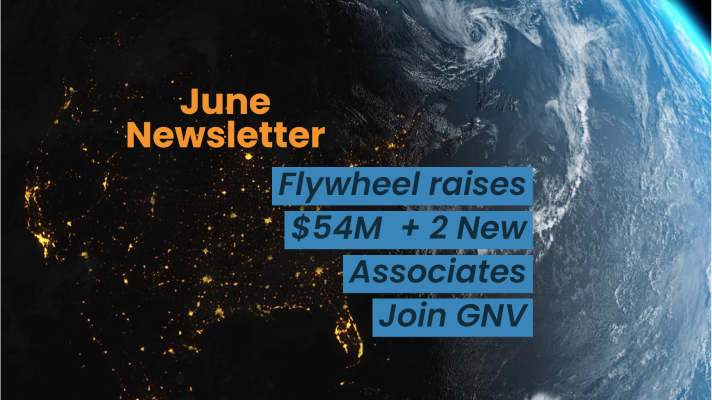
June Newsletter
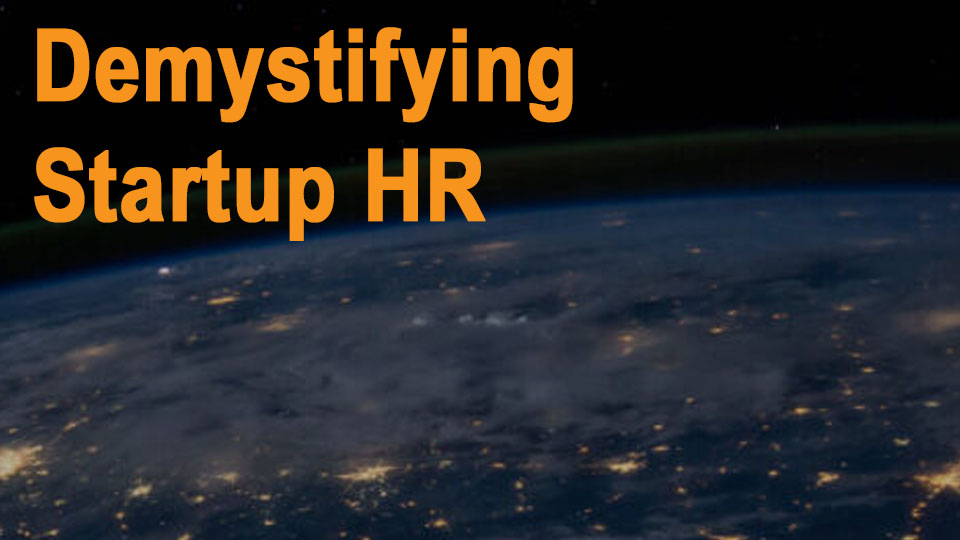
Demystifying Startup HR
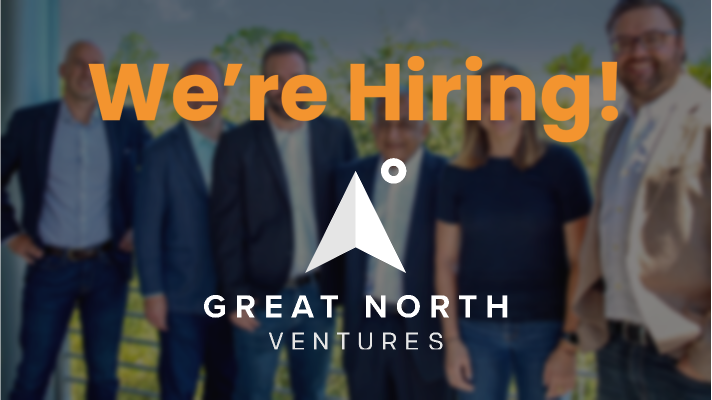
Head of Finance & Fund Administration- Venture Capital Firm (Remote)

Demystifying Startup HR
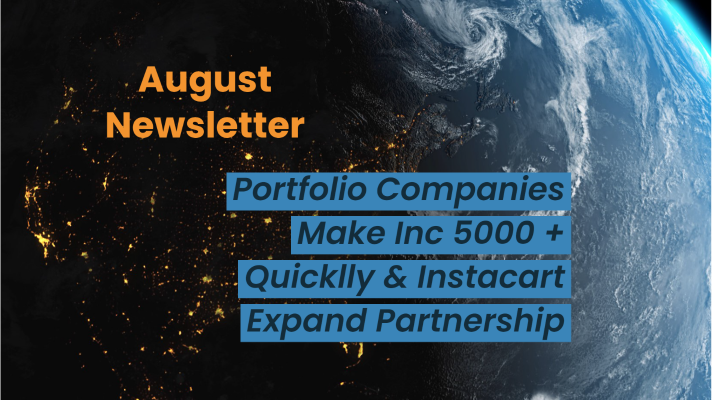
3 Portfolio Companies Make Inc. 5000 + Quicklly & Instacart Expand
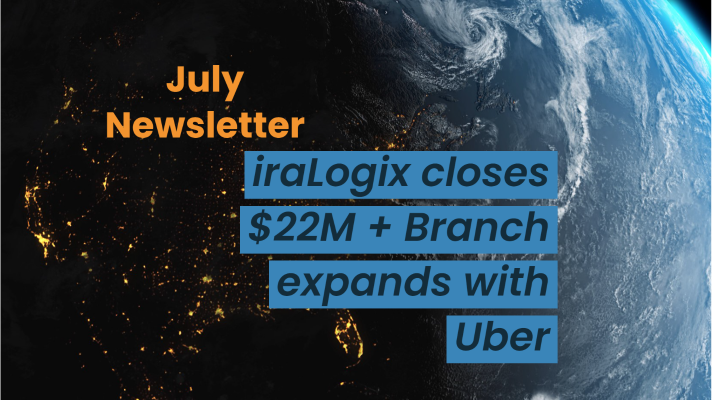
iraLogix closes $22M + Branch expands with Uber
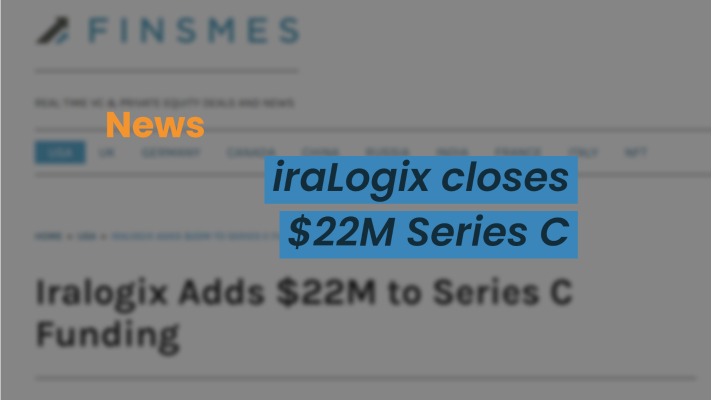
iraLogix closes $22M Series C
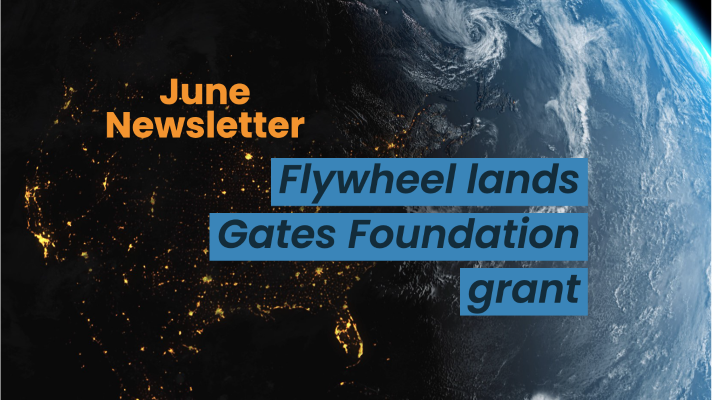
Flywheel lands Gates Foundation grant

Venture Capital Analyst
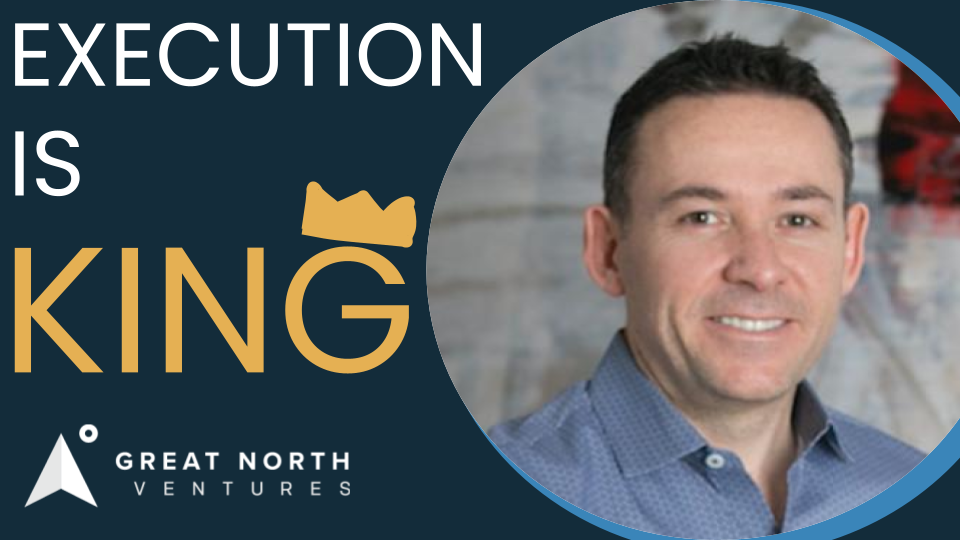
Orazio Buzza, Founder and CEO of Fooda – on Episode 13, “Execution is King”
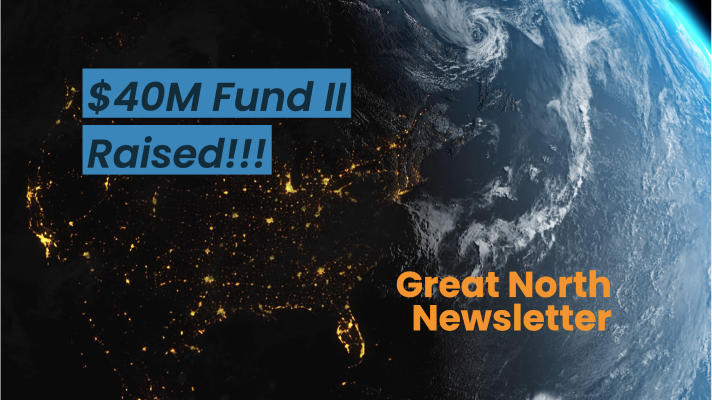
$40M Fund II Raised!
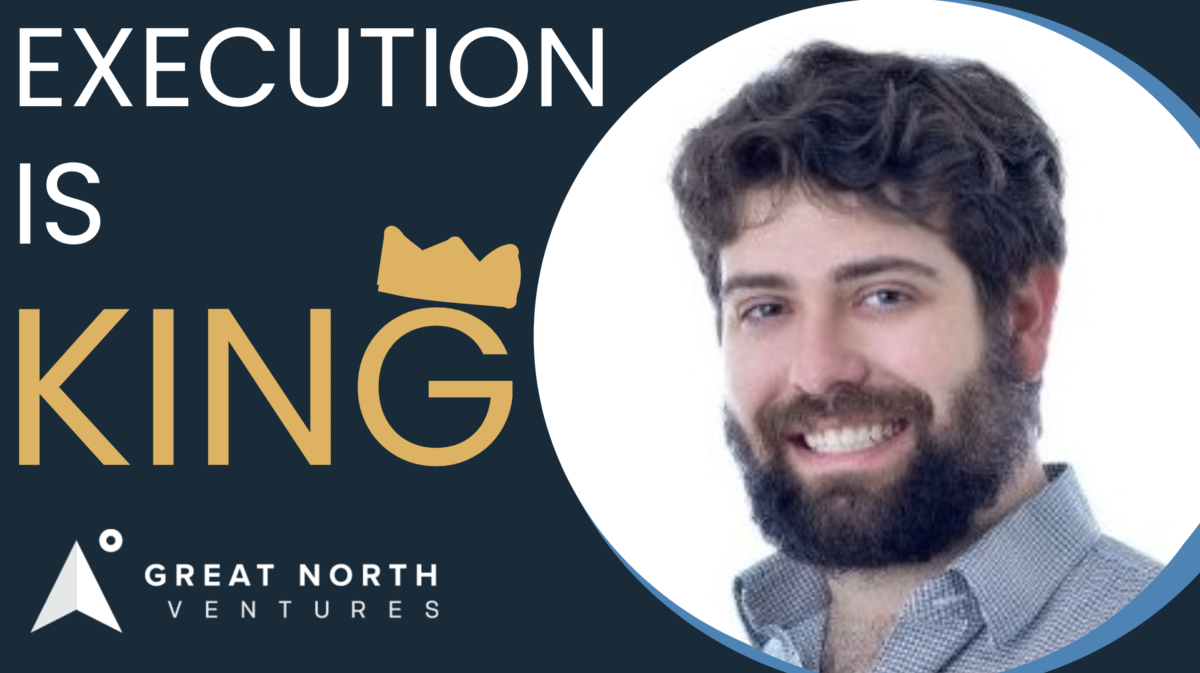
Eric Martell, Founder of Pear Commerce: Episode 13, Execution is King

Great North Ventures Raises $40 Million Fund II
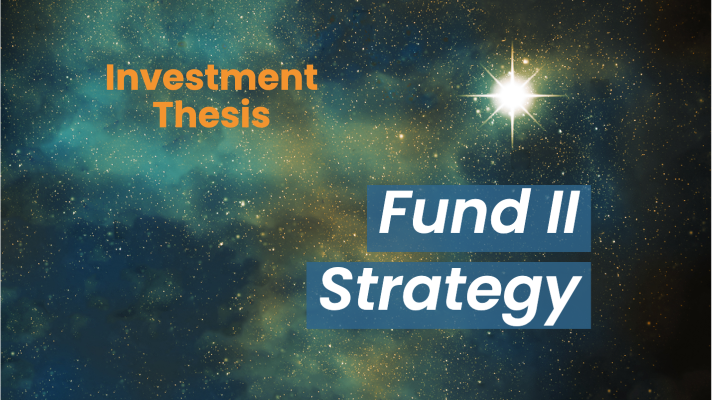
Investment Thesis: Fund II Strategy

Investment Theme: Community-Driven Applications
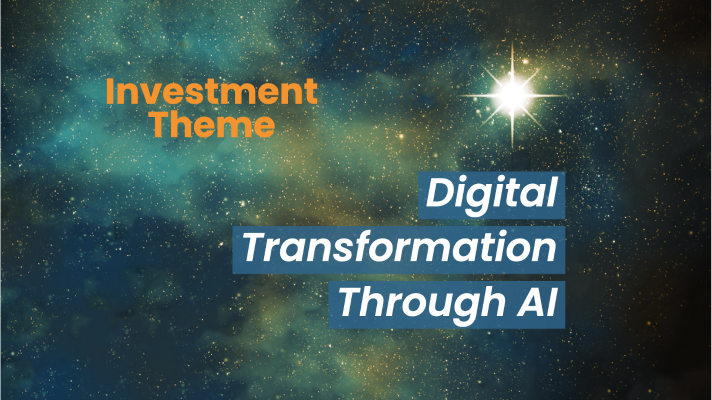
Investment Theme: Digital Transformation Through AI
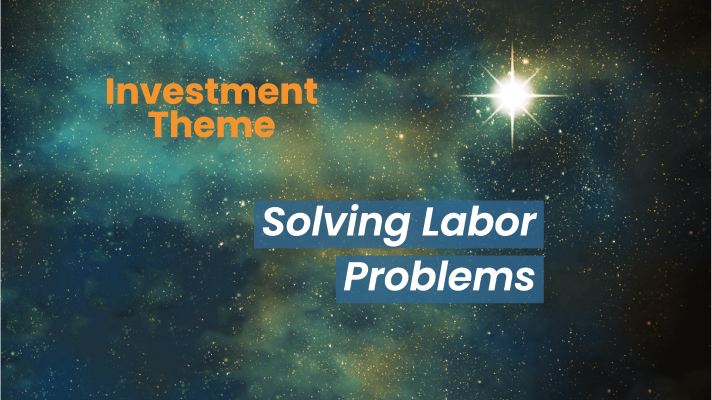
Investment Theme: Solving Labor Problems
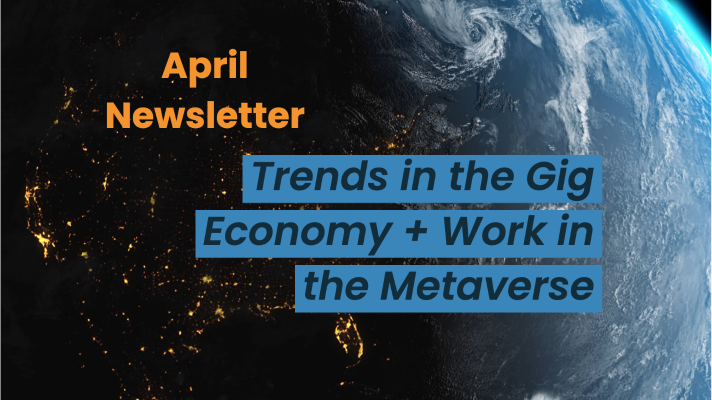
Trends in the Gig Economy + Work in the Metaverse
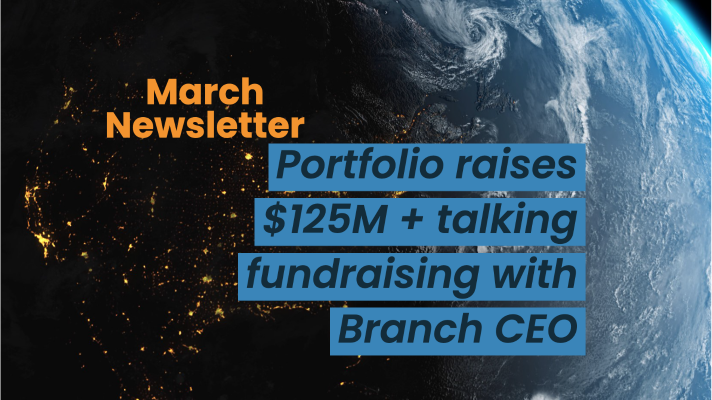
Portfolio raises $125M + talking fundraising with Branch CEO
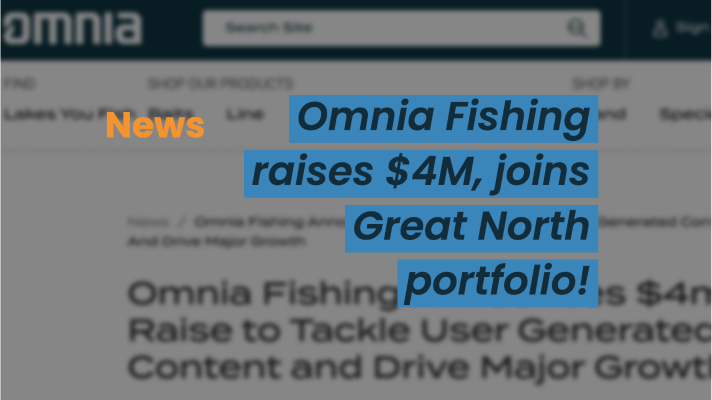
Omnia Fishing closes $4M round, joins Great North portfolio!
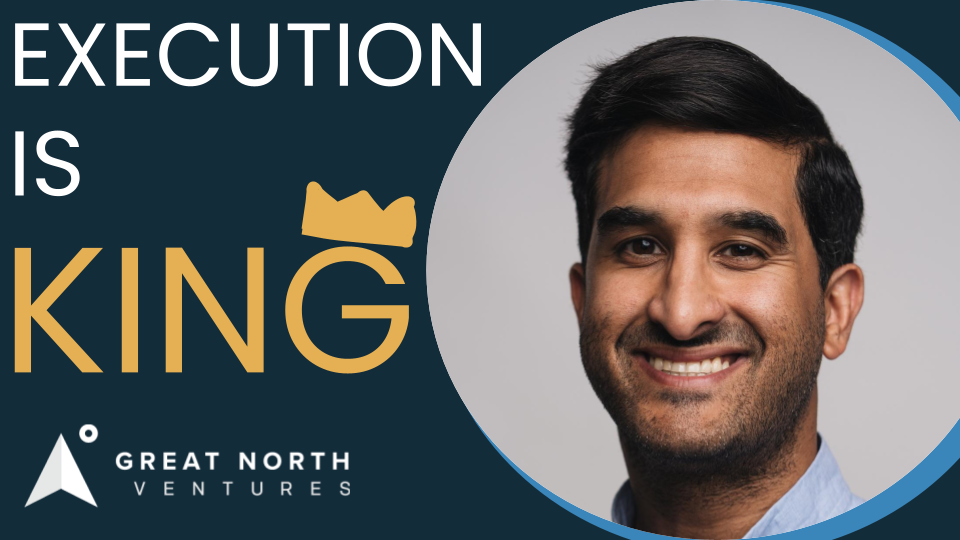
Atif Siddiqi, Founder/CEO of Branch: Episode 11, Execution is King

Michael Martocci, CEO and Founder of SwagUp: Episode 10, Execution is King

Yardstik new to portfolio, closes $8M Series A
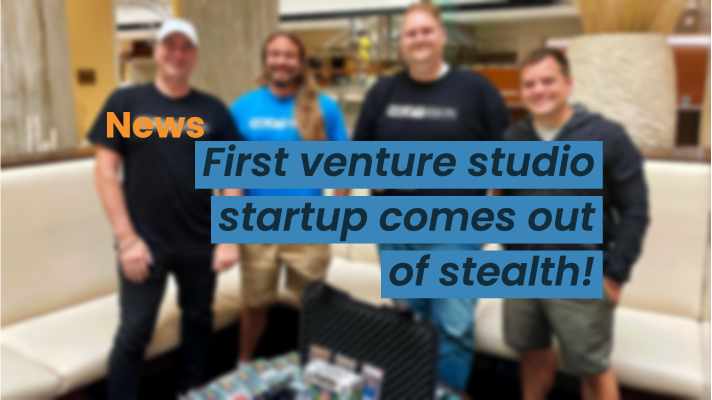
First venture studio startup comes out of stealth!

Insights for founders from a data guru, + FactoryFix raises a Series A!
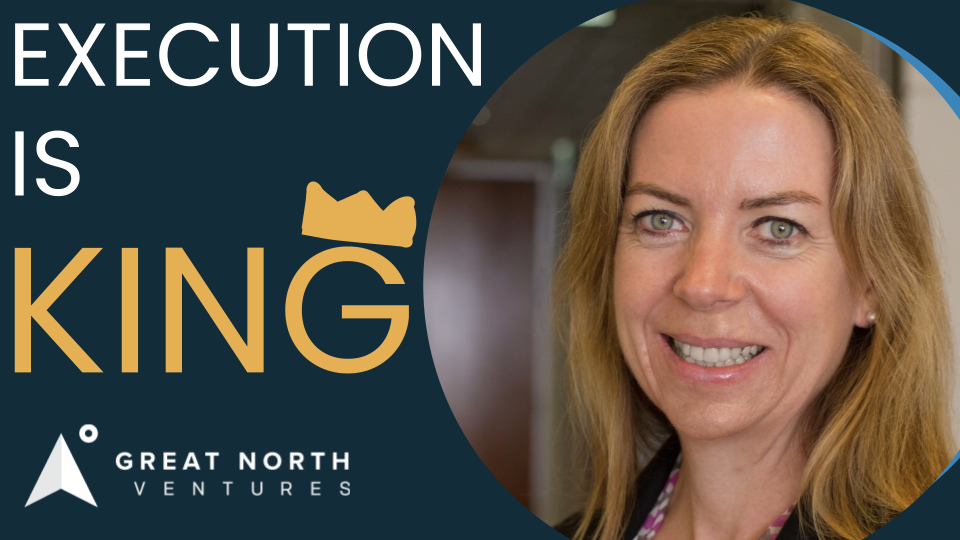
Una Fox: Episode 9, Execution is King

Start With a Mobile App, Not a Website
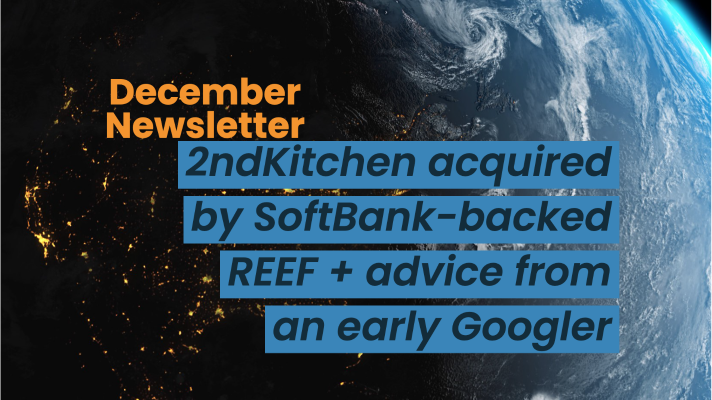
2ndKitchen acquired by SoftBank-backed REEF + advice from an early Googler
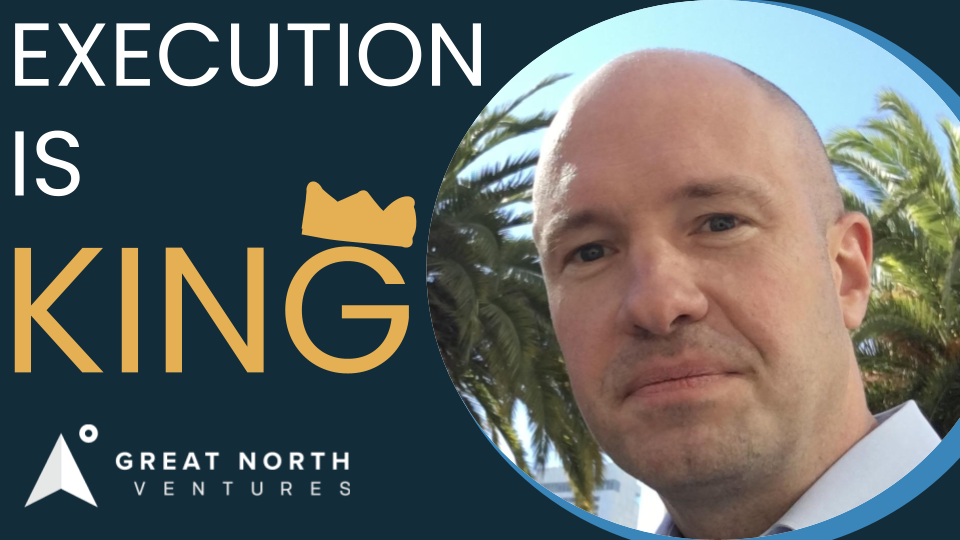
Joe Sriver, 4giving: Episode 8, Execution is King

2ndKitchen Acquired by REEF
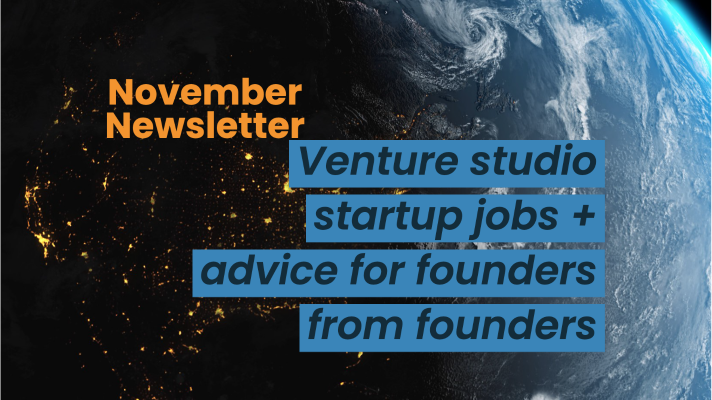
Venture studio startup jobs + advice for founders from founders
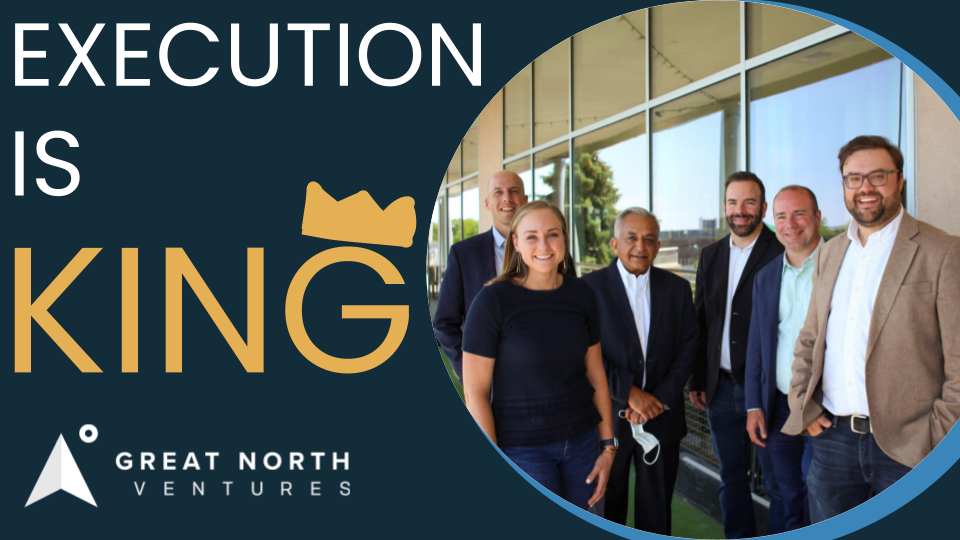
Best Advice from the Great North Annual Event: Episode 7, Execution is King
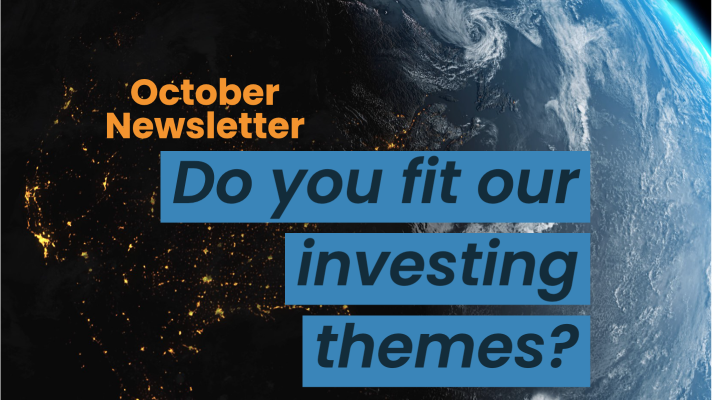
Newsletter: Do you fit our investing themes?
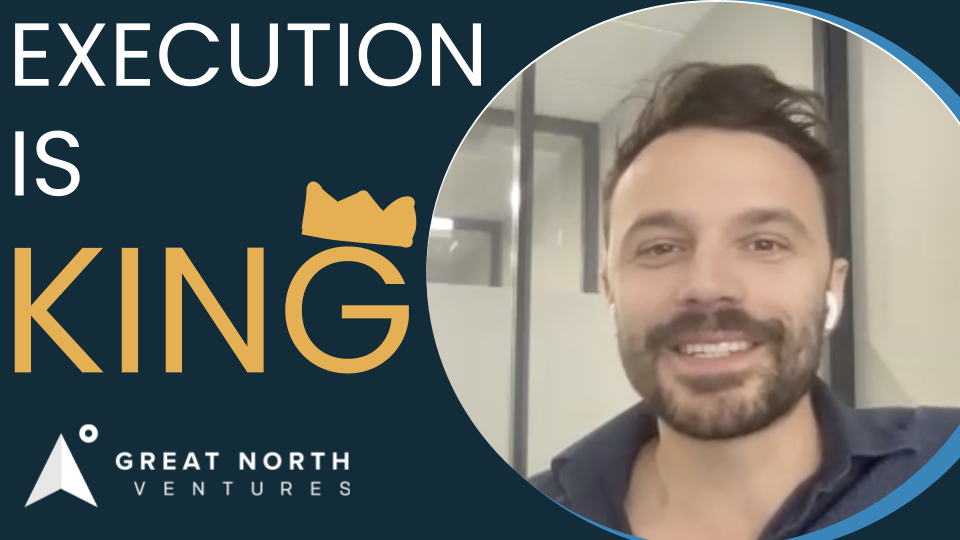
Jonathan Treble, PrintWithMe: Episode 6, Execution is King
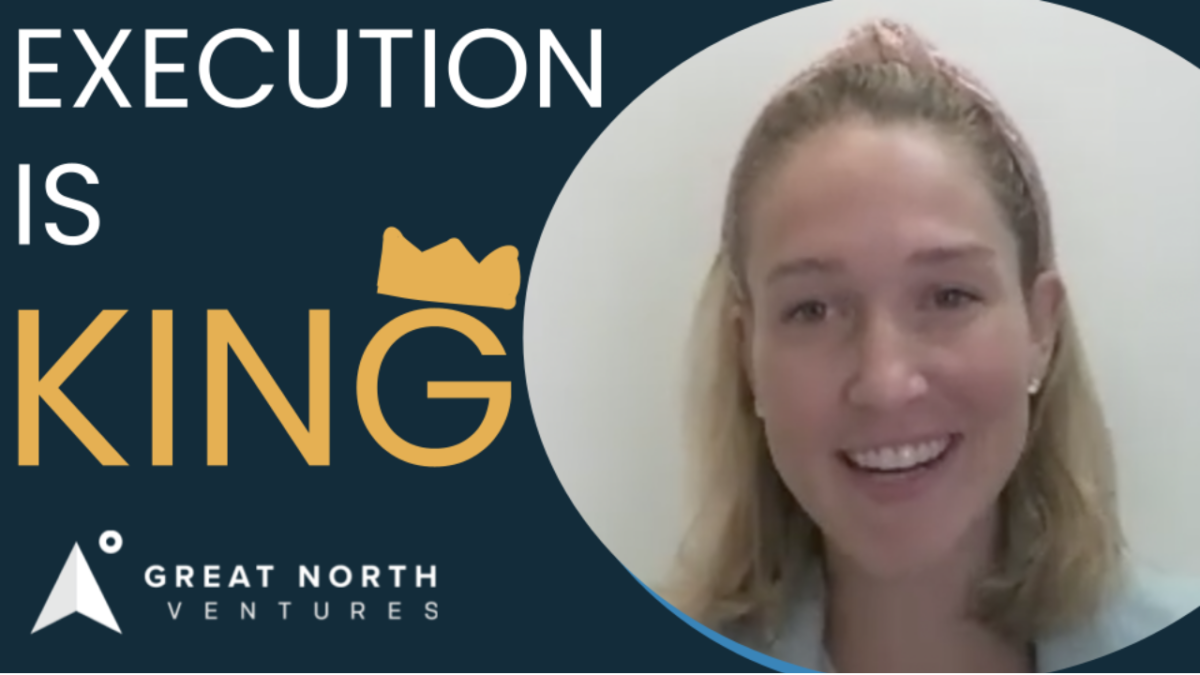
Anna Mason, Revolution: Episode 5, Execution is King

Mynul Khan, FieldNation: Episode 4, Execution is King
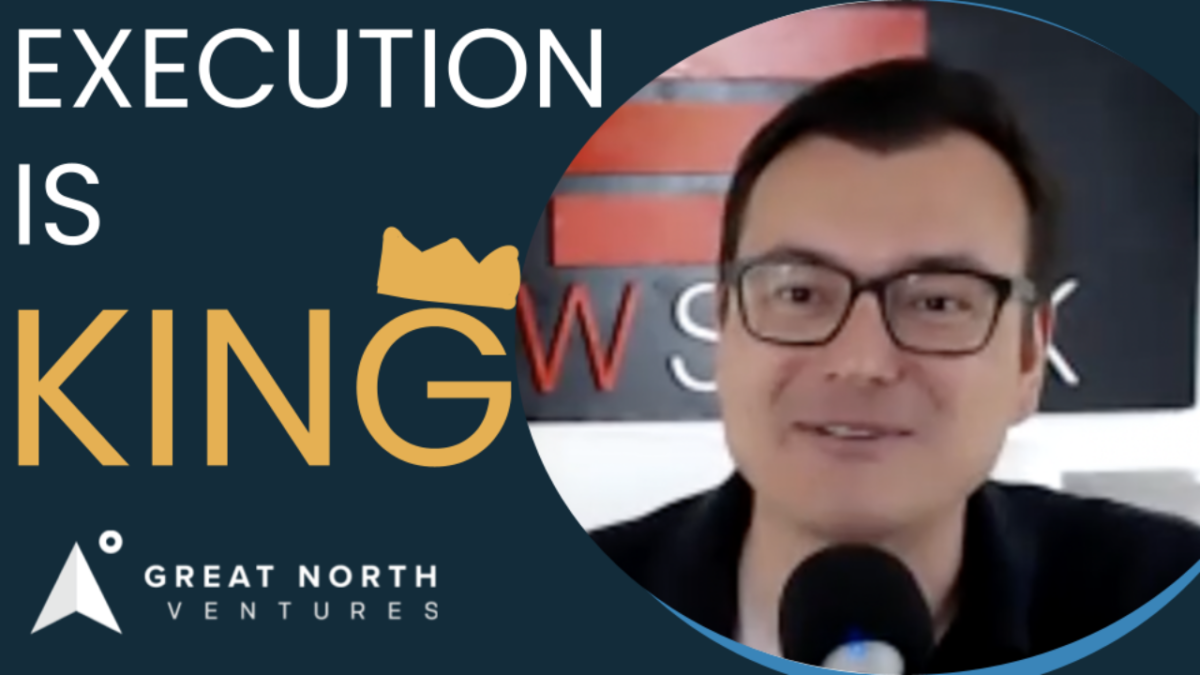
Nick Moran, New Stack Ventures: Episode 3, Execution is King
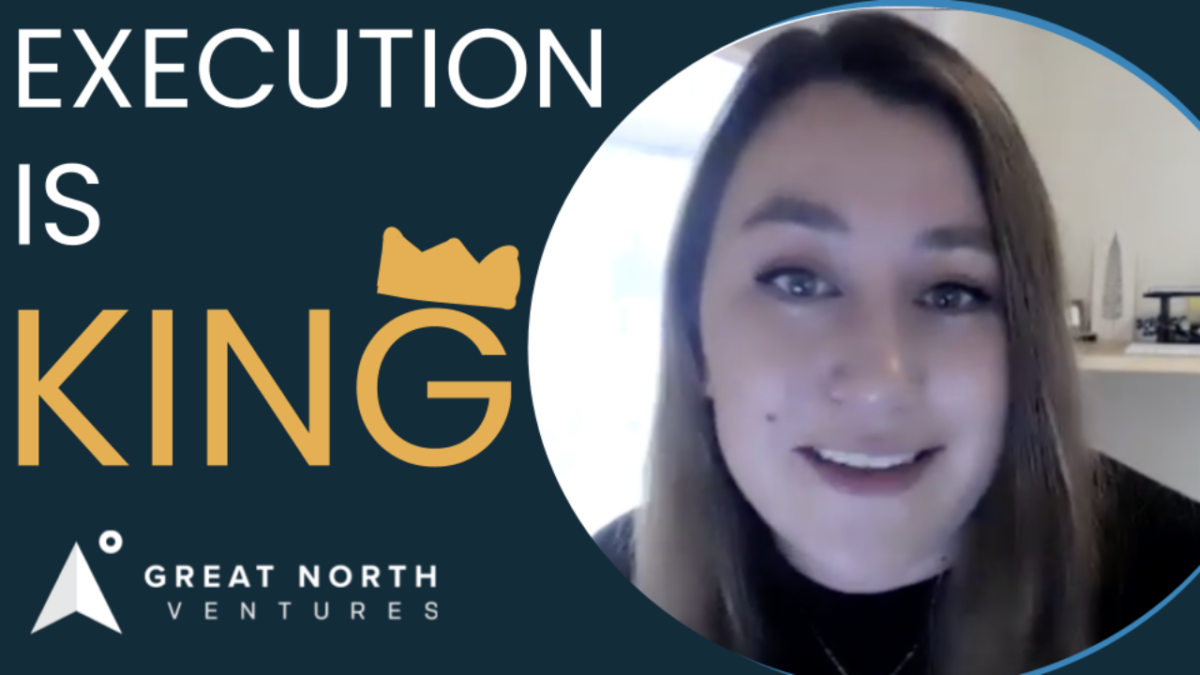
Molly Pyle, Center on Rural Innovation (CORI): Episode 2, Execution is King

Justin Kaufenberg, Rally Ventures: Execution is King Episode 1
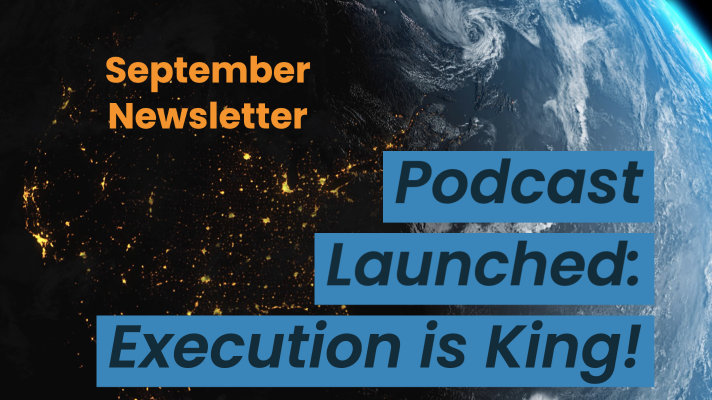
Newsletter: “Podcast Launched: Execution is King!”
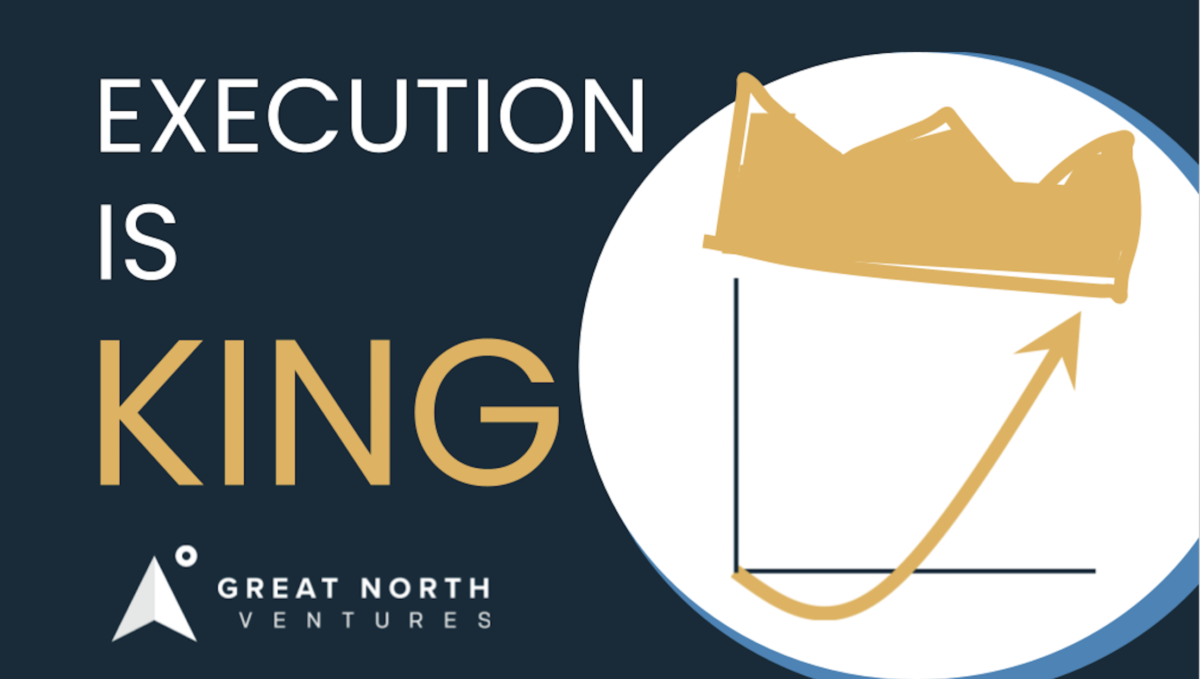
“Execution is King” – the Great North Ventures Podcast
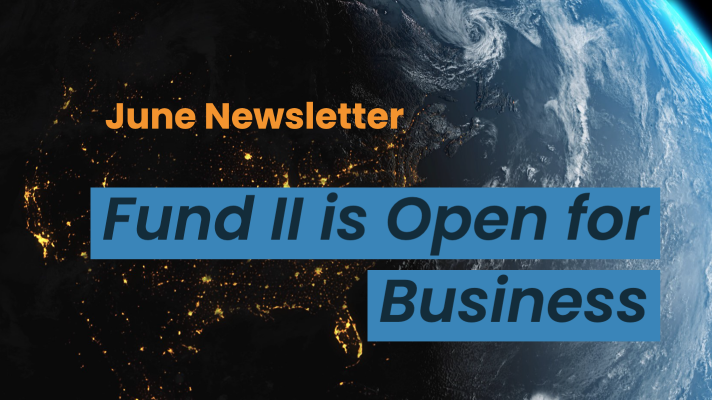
Newsletter: Fund II is open for business!
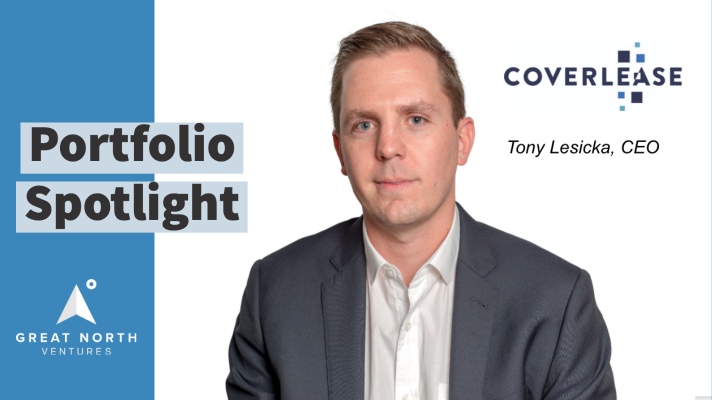
Unlocking the Potential of Anonymized Commercial Real Estate (CRE) Data

Fund II is open for Business!

Mike Schulte Promoted to Venture Partner
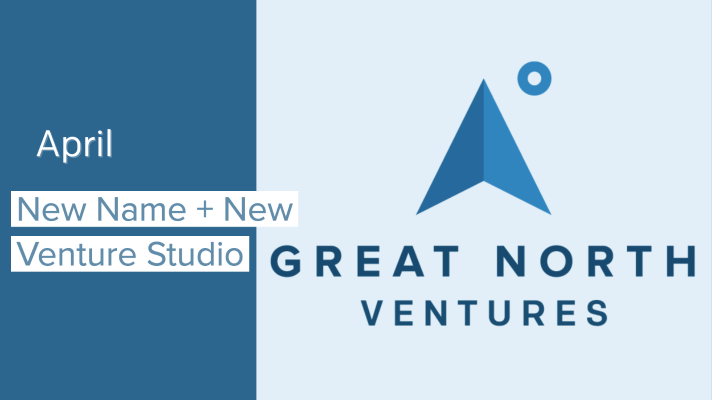
New Name + New Venture Studio
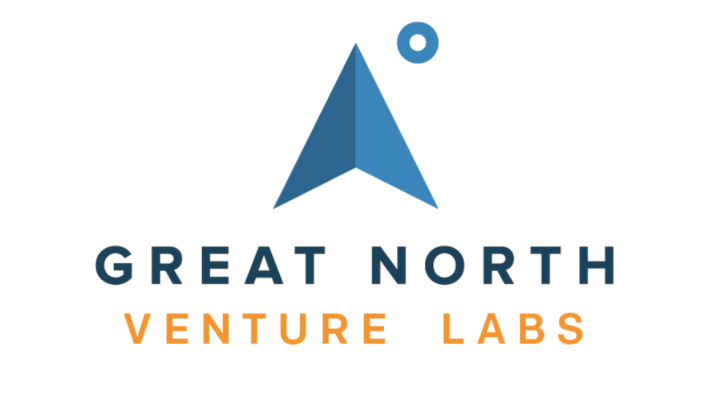
Great North Launches Startup Studio
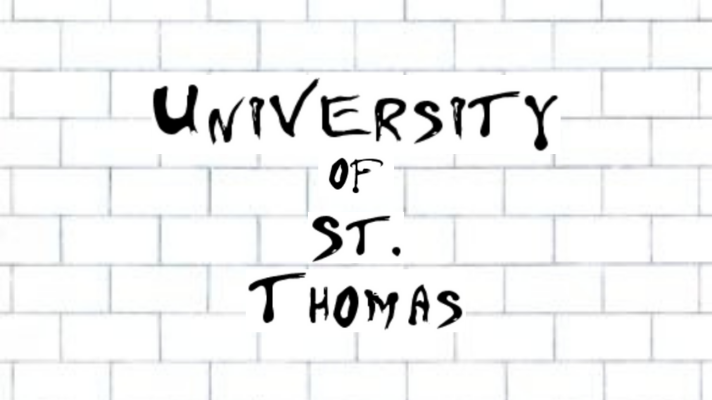
We Don’t Need No [full-time MBA] Education
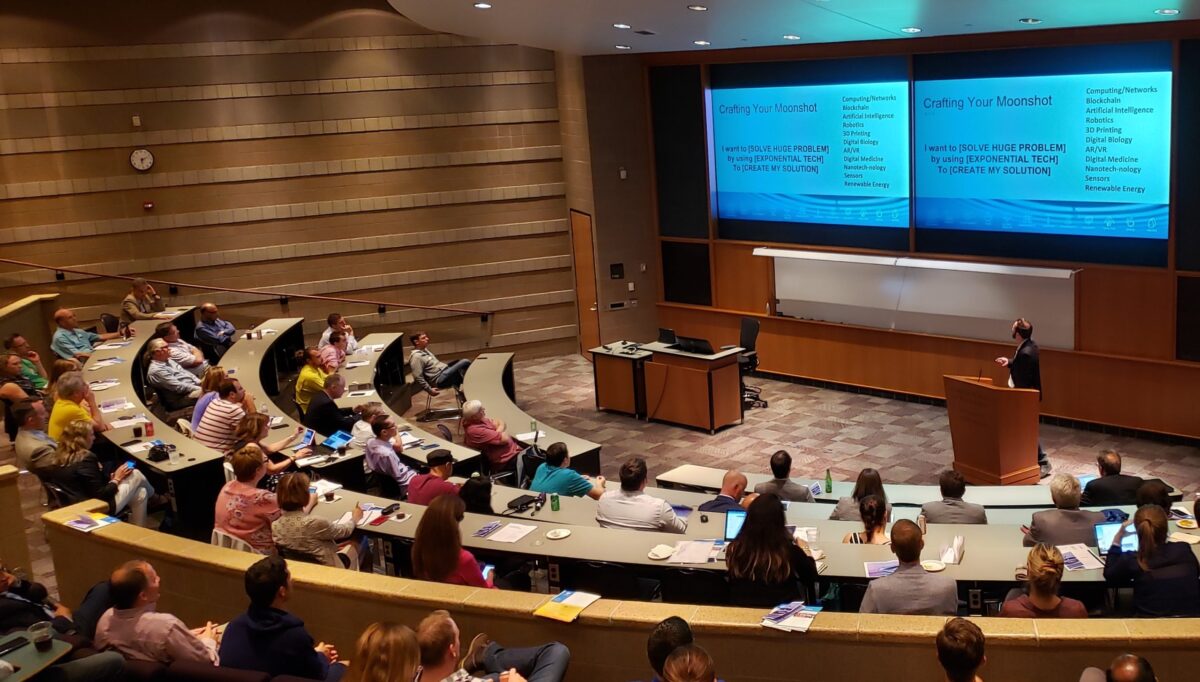
How the University of Minnesota is Embracing Startup Culture

Top Stories of 2020, iraLogix, and LaunchMN Calls for Mentors
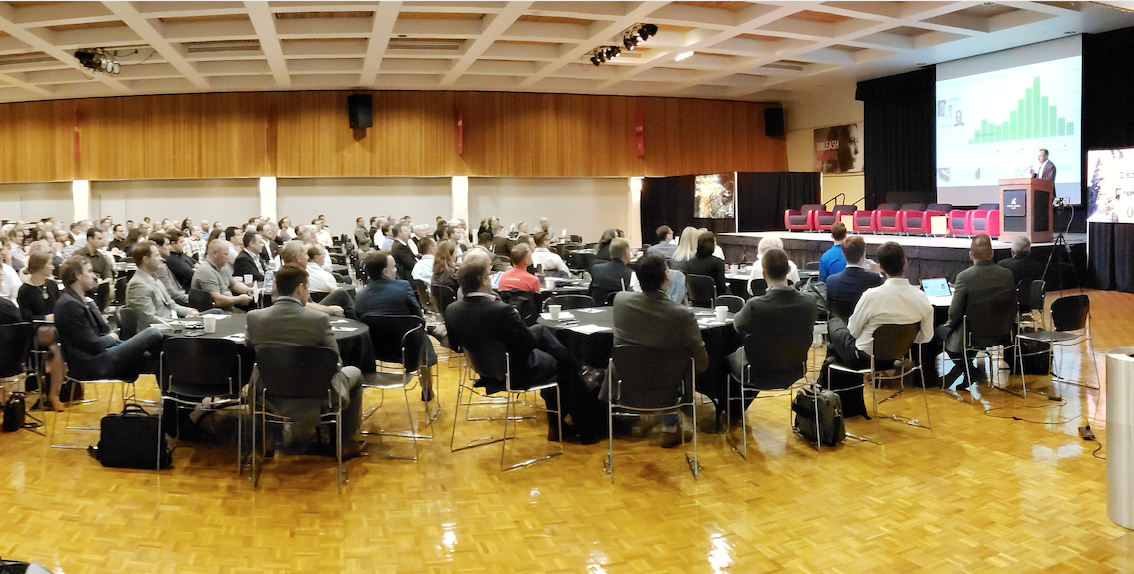
Building Capacity for Innovation
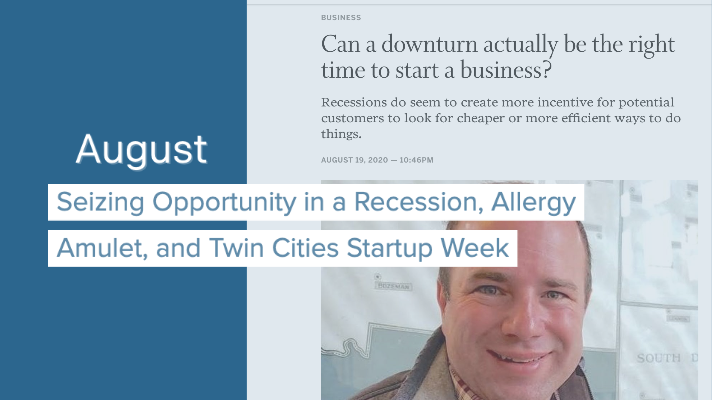
Seizing Opportunity in a Recession, Allergy Amulet, and Twin Cities Startup Week
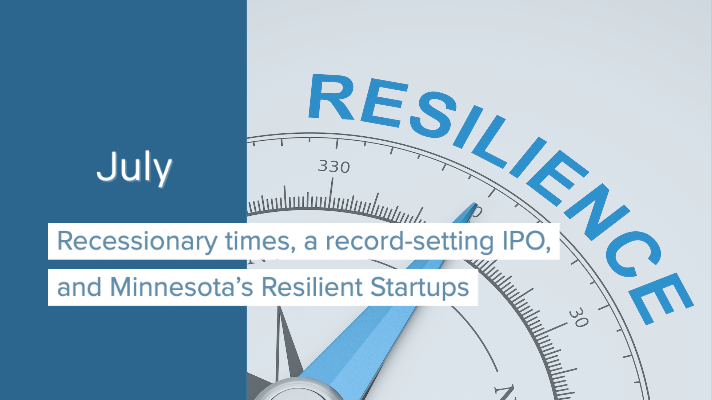
Recessionary times, a record-setting IPO, and Minnesota’s Resilient Startups
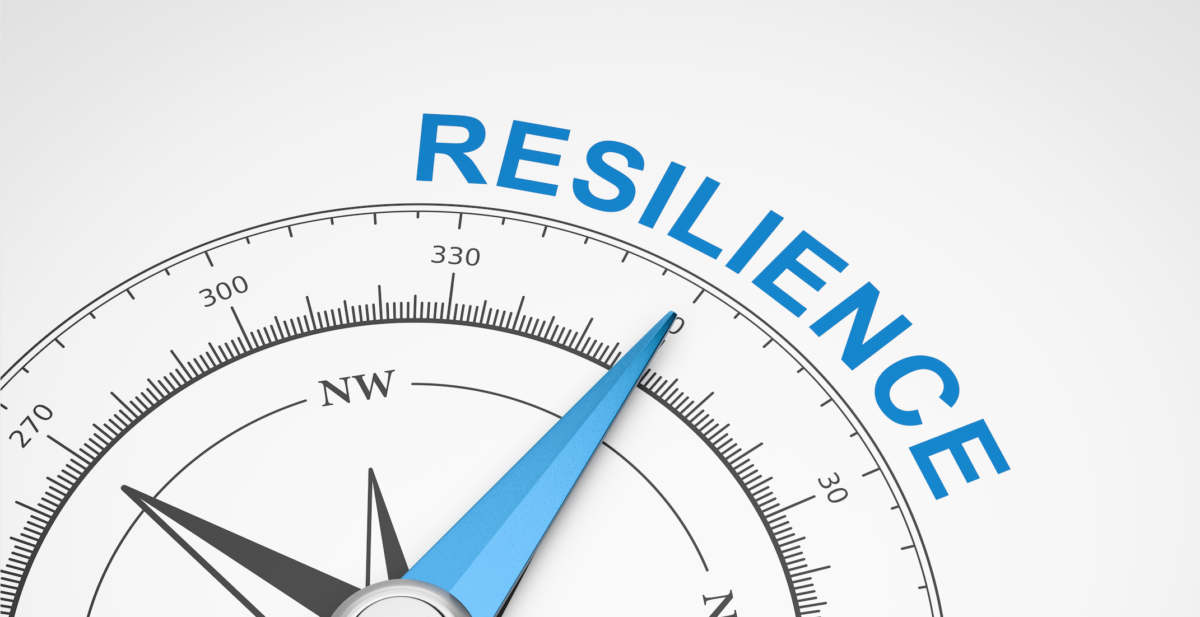
Minnesota's Resilient Startups

July 4th, Equitable American Dream-ing, and Robots Diagnosing COVID
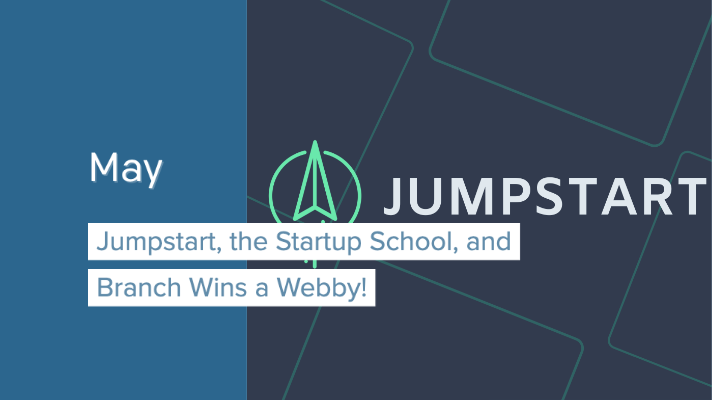
Jumpstart, the Startup School, and Branch Wins a Webby!
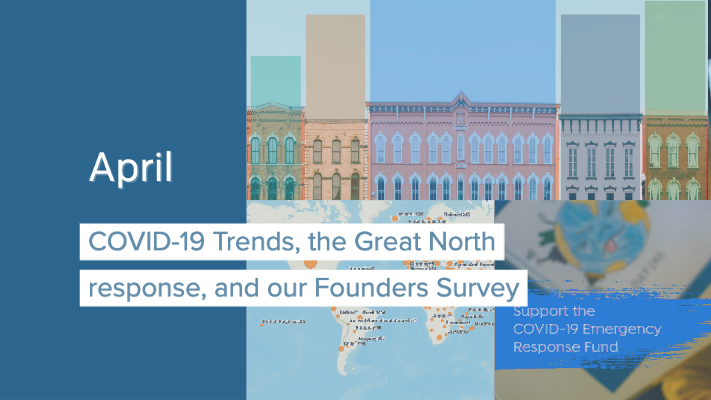
COVID-19 Trends, the Great North response, and our Founders Survey
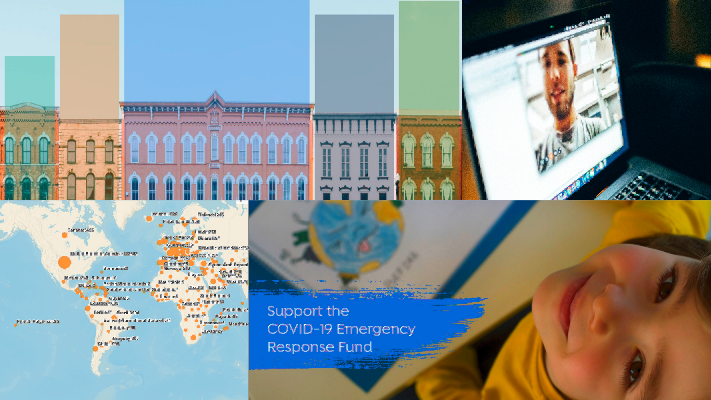
Giving in the Time of Coronavirus

COVID-19 Resources for Startups, State-by-State

COVID-19, the CARES Act, and startups stepping up
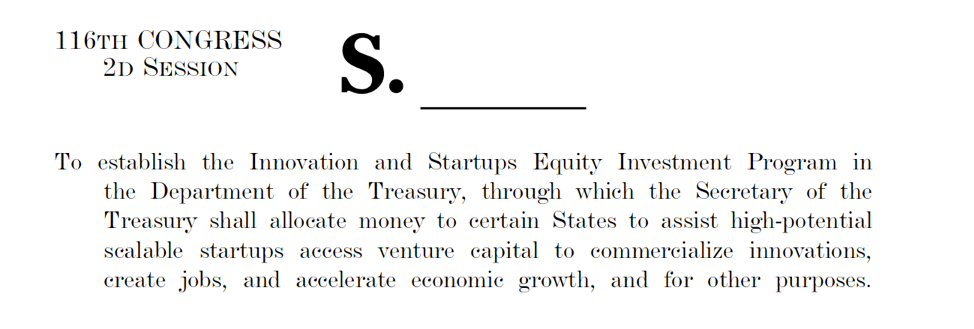
New Business Preservation Act
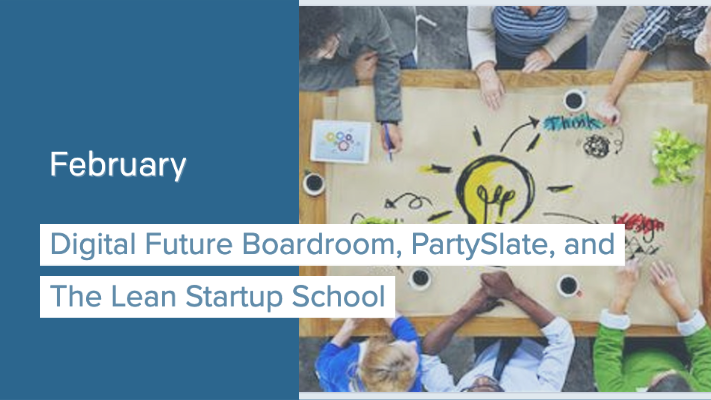
Digital Future Boardroom, PartySlate, and The Lean Startup School
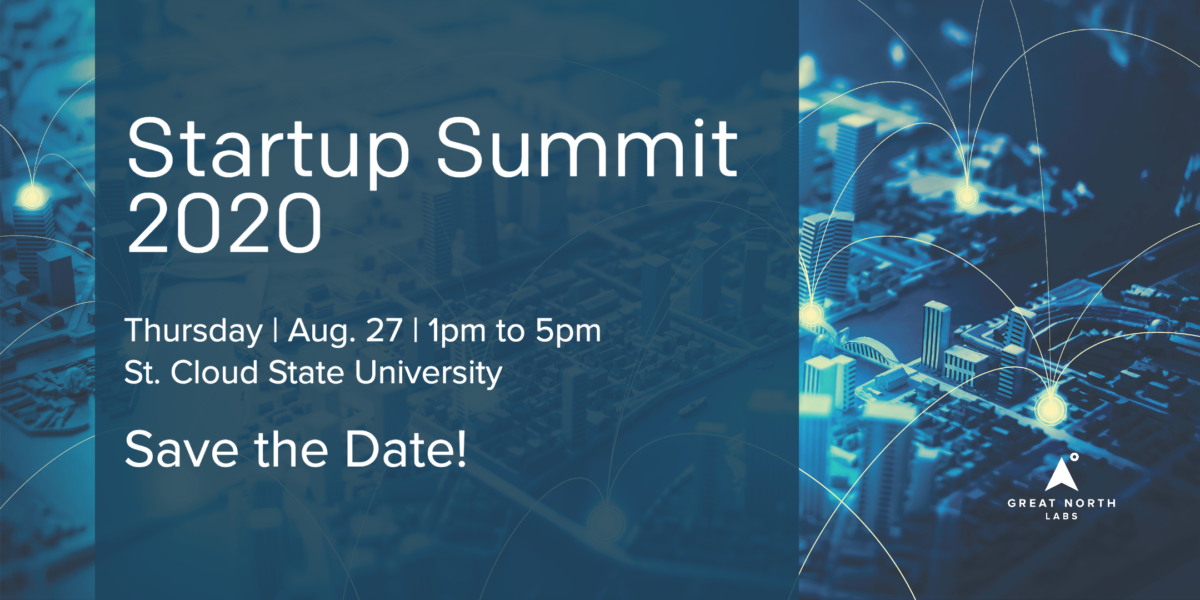
Great North Labs’s Startup Summit 2020

Great North Labs's Startup Summit 2020
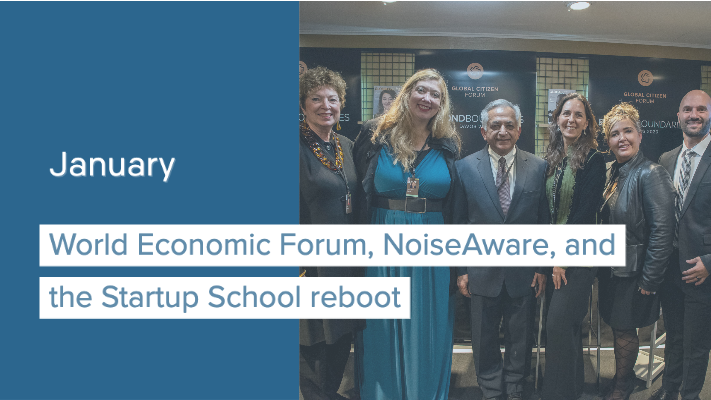
World Economic Forum, NoiseAware, and the Startup School reboot

Great North Labs at the World Economic Forum 2020 in Davos
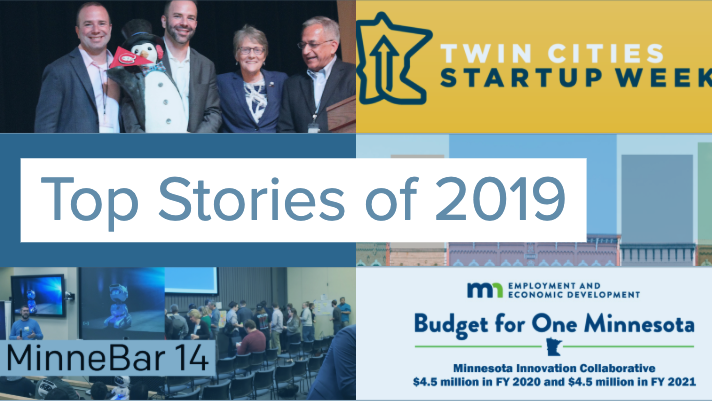
Top 5 Stories of 2019
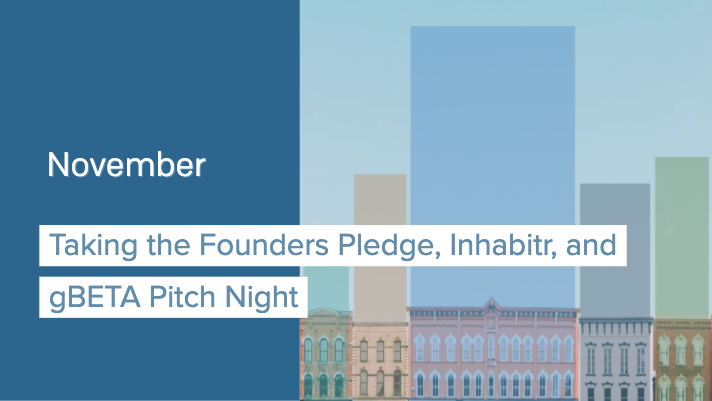
Taking the Founders Pledge, Inhabitr, and gBETA Pitch Night

Founders Pledge: Support the Organizations that Support You
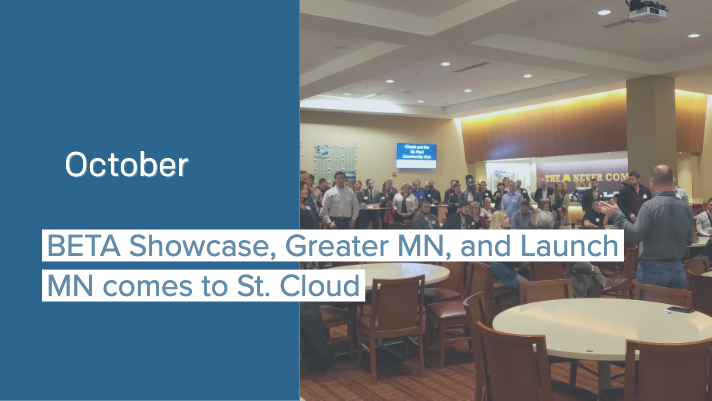
BETA Showcase, Greater MN, and Launch MN comes to St. Cloud
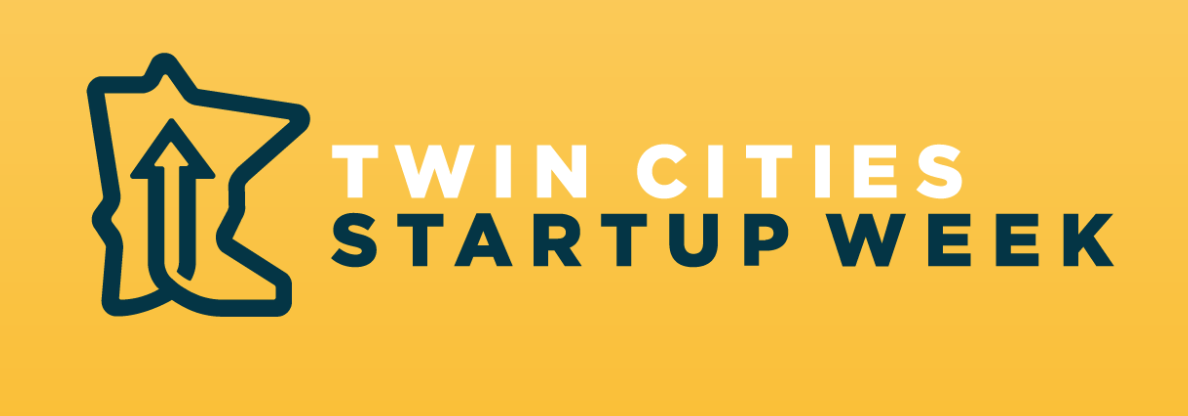
7 Places to Spot Us at Startup Week
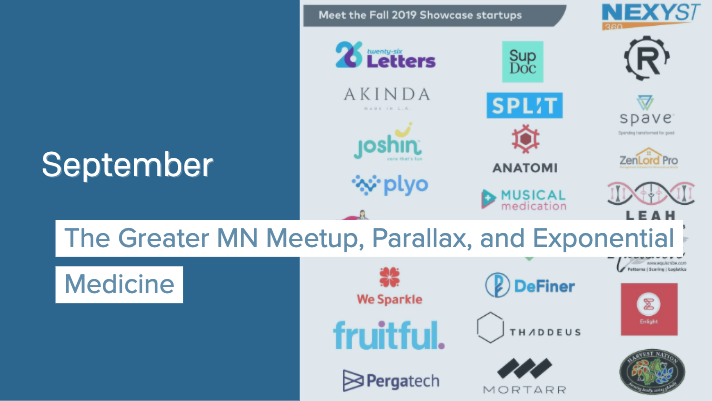
The Greater MN Meetup, Parallax, and Exponential Medicine
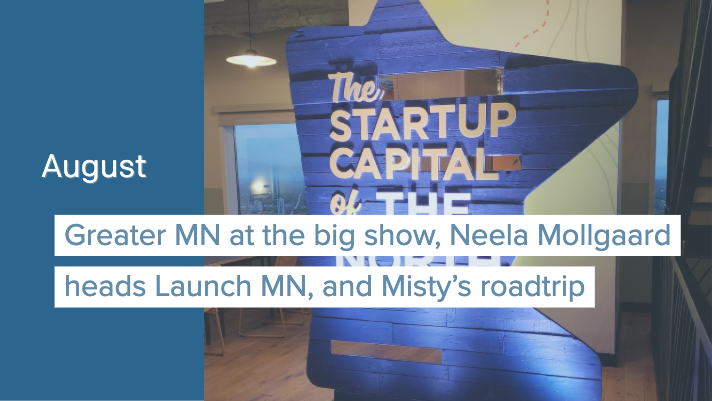
Greater MN at the big show, Neela Mollgaard heads Launch MN, and Misty’s roadtrip.

Talking VC, tech kids, and Forge North’s Horizon

June: Great North Labs’s first fund raised!
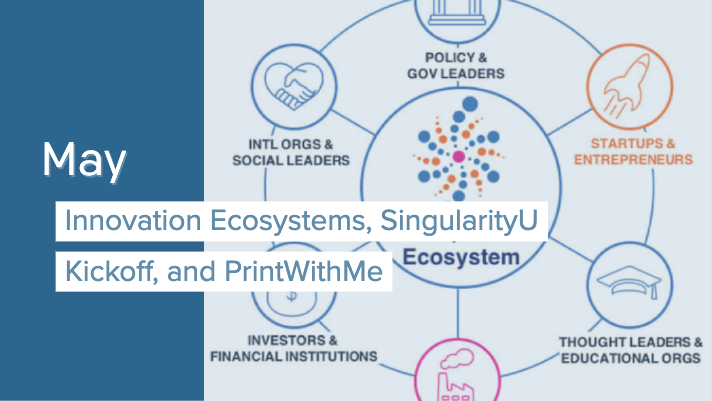
May: Innovation Ecosystems, SingularityU Kickoff, and PrintWithMe
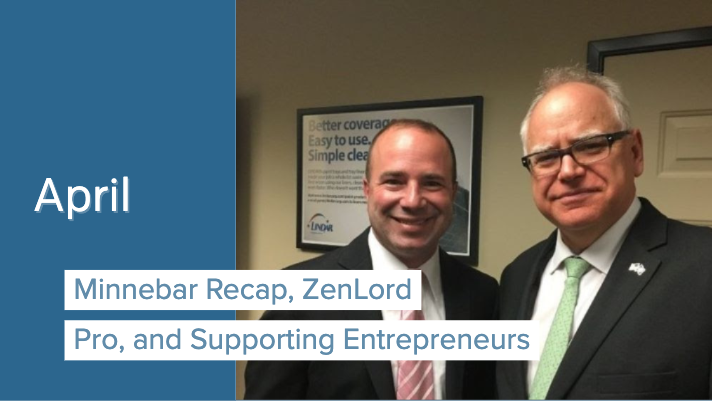
April: Minnebar Recap, ZenLord Pro, and Supporting Entrepreneurs
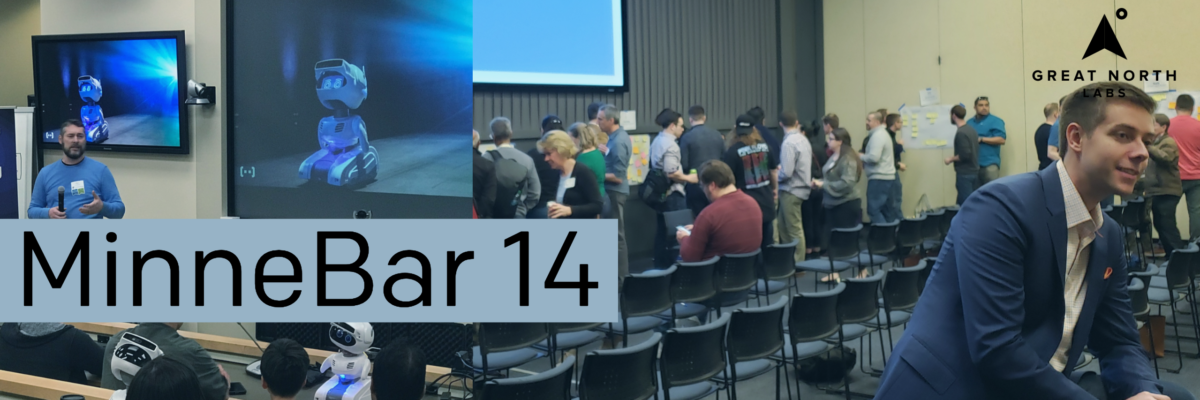
MinneBar 14 Recap

Dispatch and 2ndKitchen claim Tech Madness titles
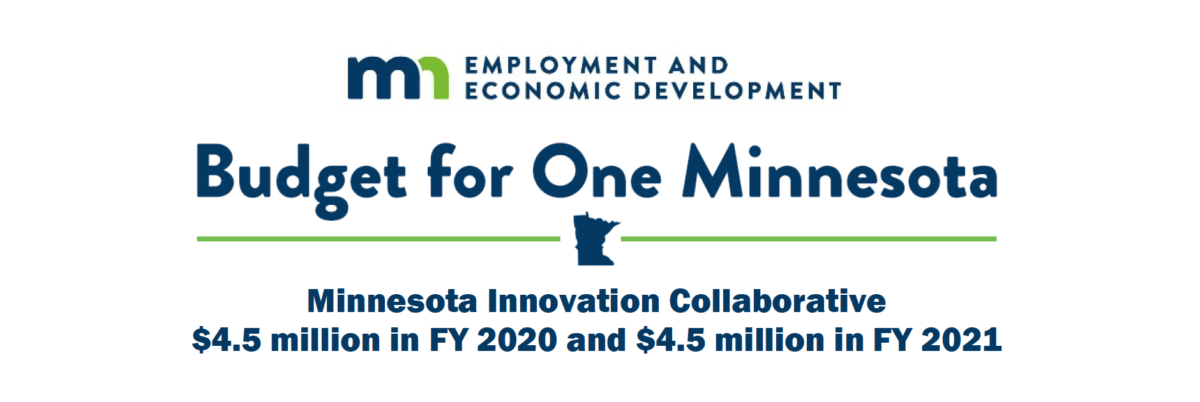
Minnesota Innovation Collaborative

March: Minnebar, Hockey + Hustlers, and Innovation Workshops

Great North Labs at CES
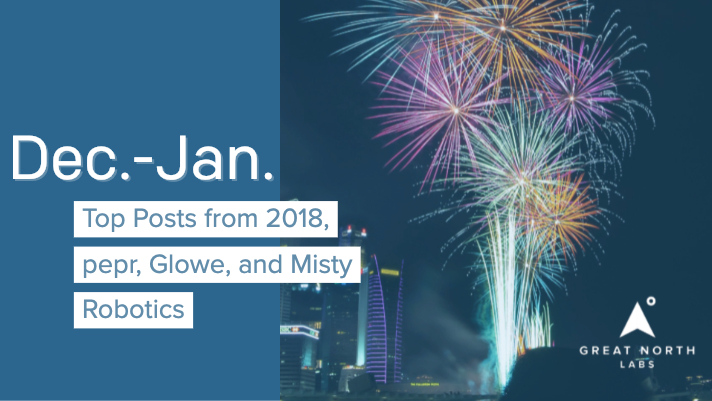
Dec.-Jan.: Top Posts from 2018, pepr, Glowe, and Misty Robotics

Carried Interest: Top Posts from 2018
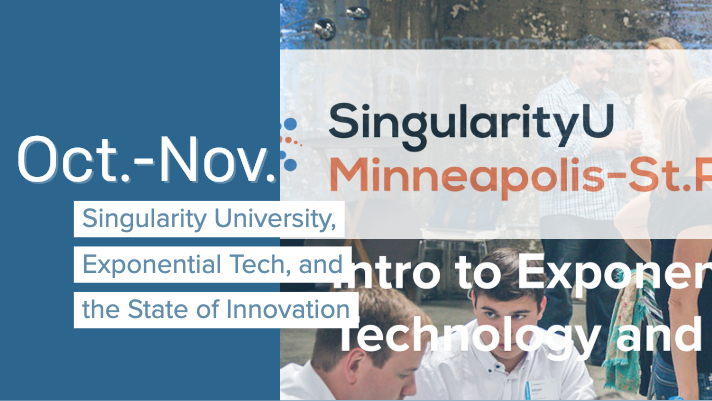
Oct.-Nov.: Singularity University, Exponential Tech, and the State of Innovation

Digital Transformation Summit, July 25th in Minneapolis
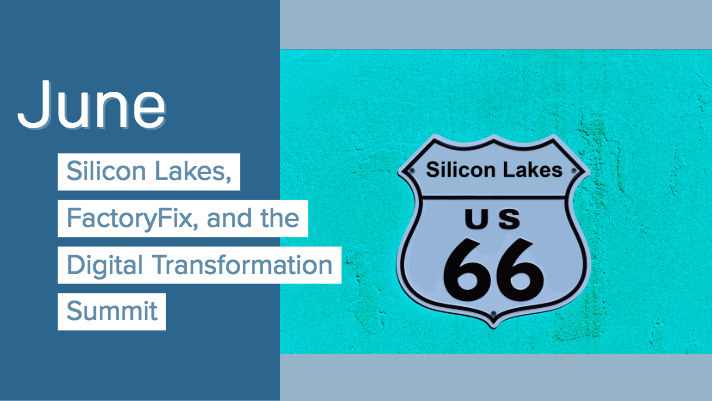
June: Silicon Lakes, FactoryFix, and the Digital Transformation Summit
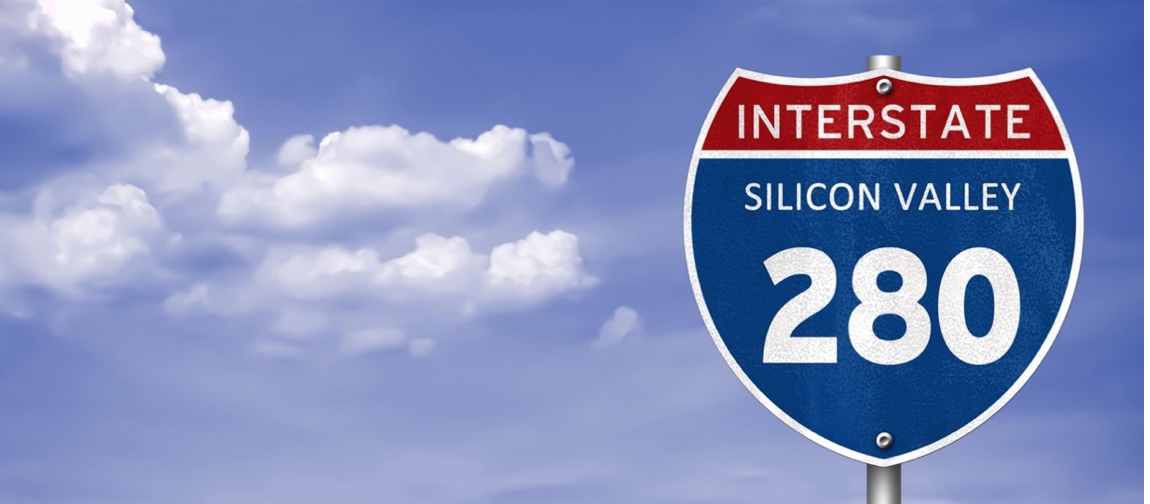
Putting the “Silicon” in Silicon Lakes
Digital Manufacturing and Logistics
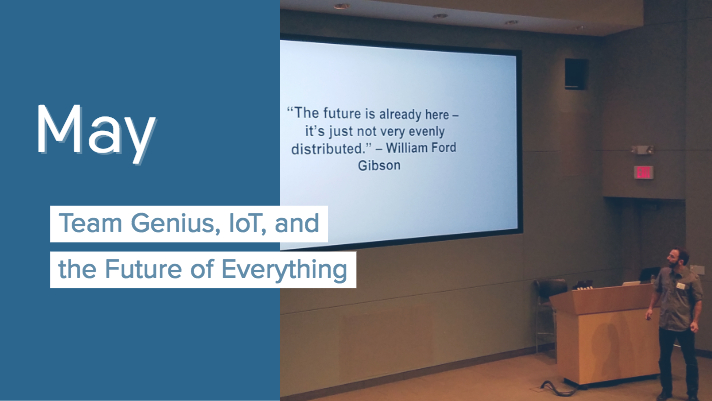
May: Team Genius, IoT, and the Future of Everything
IoT 3.0

Healthcare Innovation
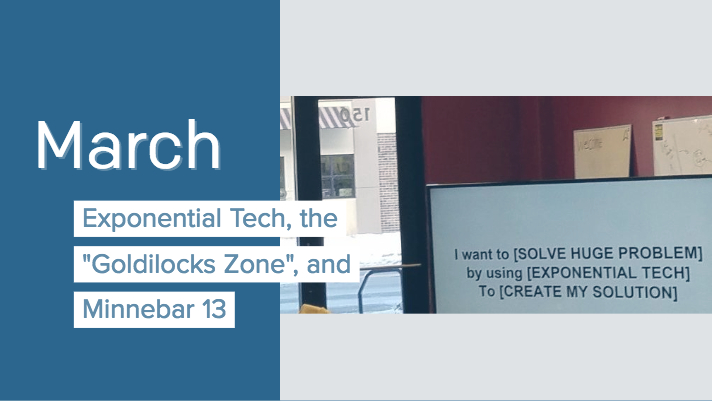
March: Exponential Tech, the “Goldilocks Zone”, and Minnebar 13
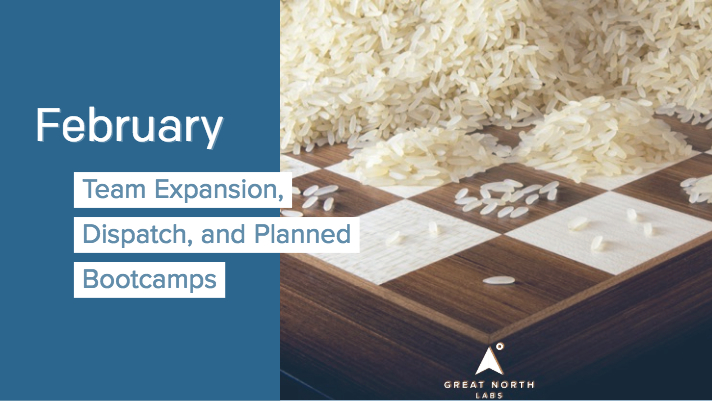
February: Team Expansion, Dispatch, and Startup School Events
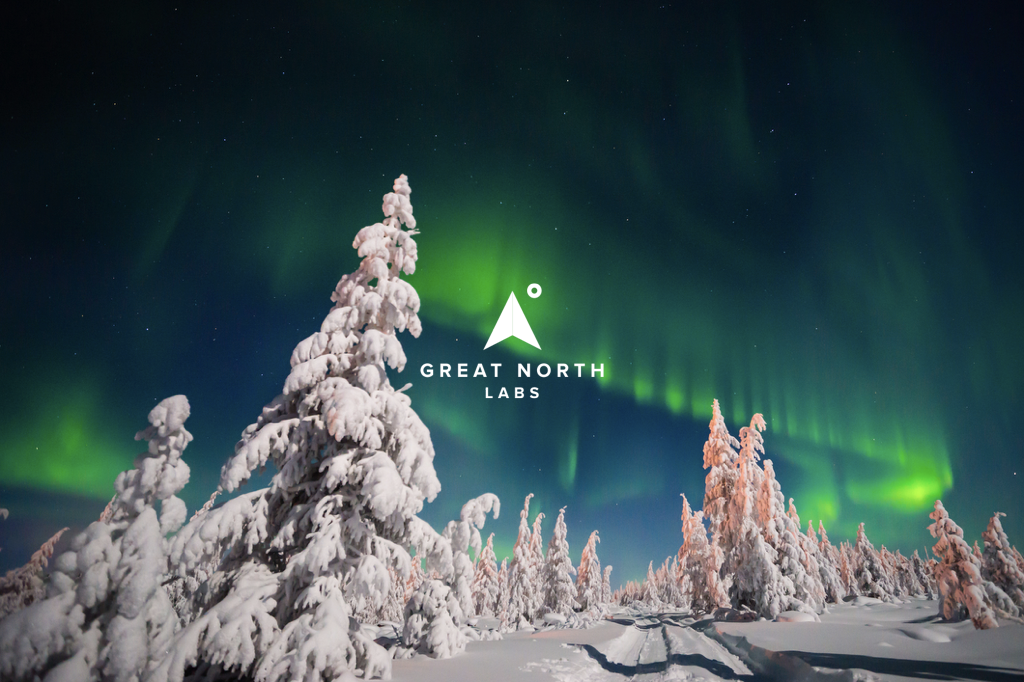
Great North Labs Newsletter – December 2017

A Letter To My Younger Self

Great North Labs Newsletter
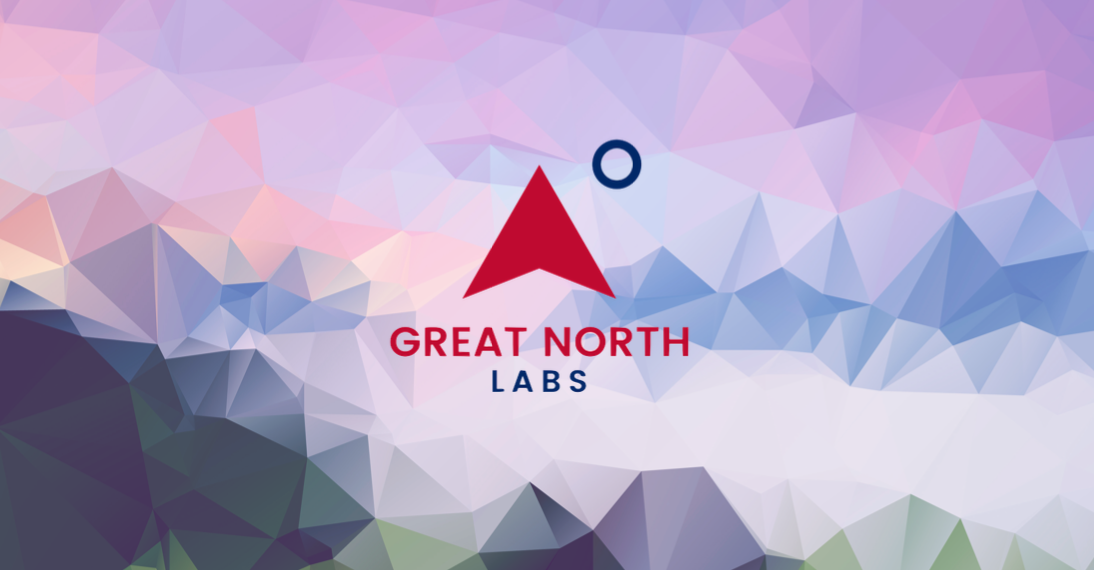
Great North Labs Featured on Tech.mn

Great North Labs Featured in St Cloud Times
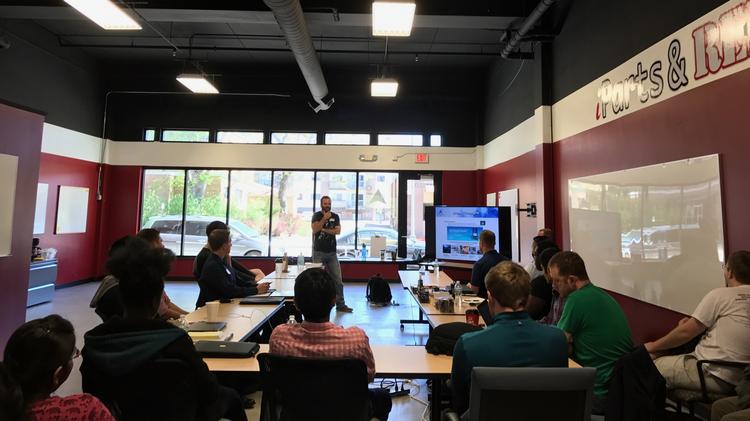
Great North Labs – Featured on BizJournals.com



